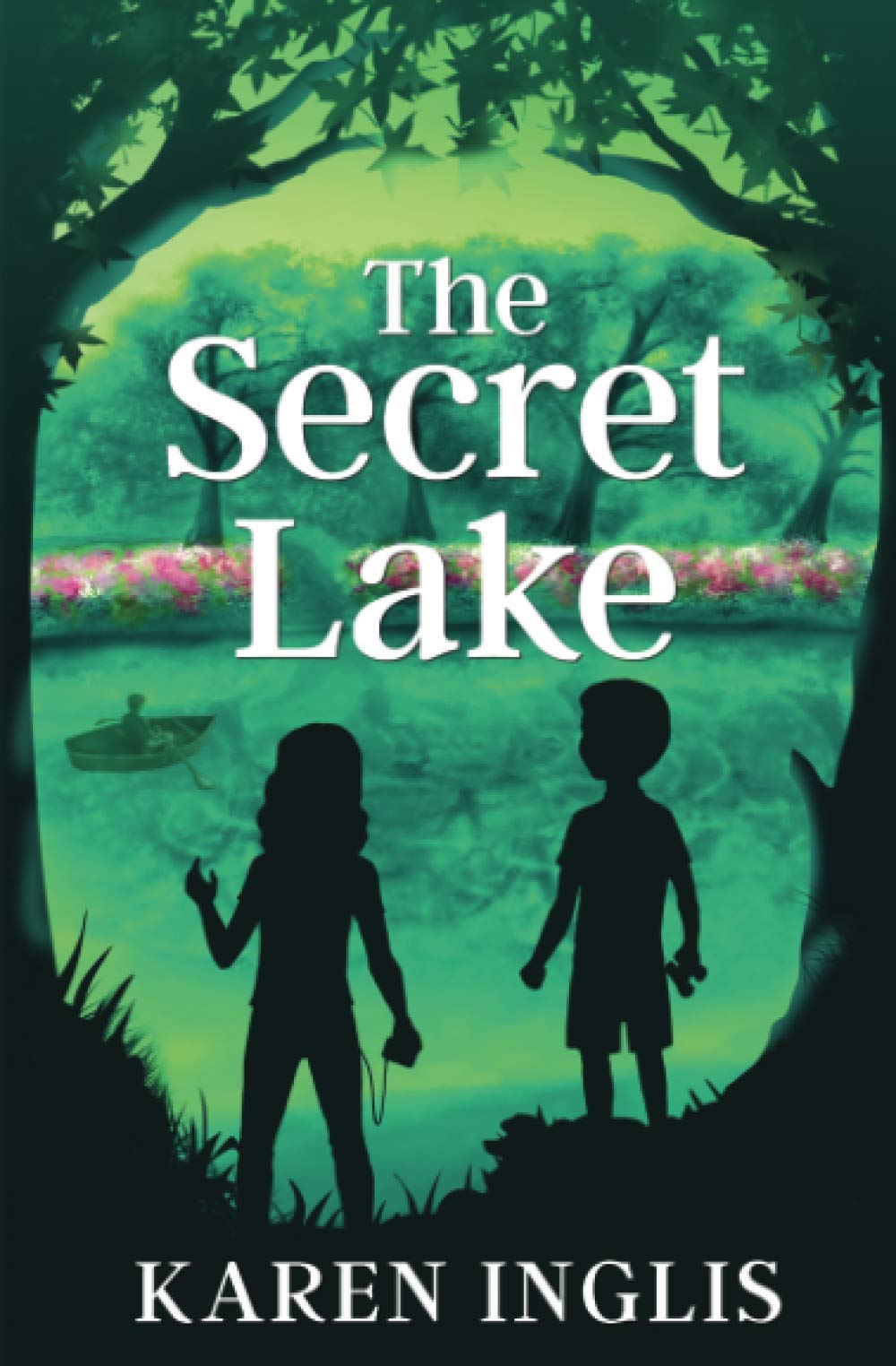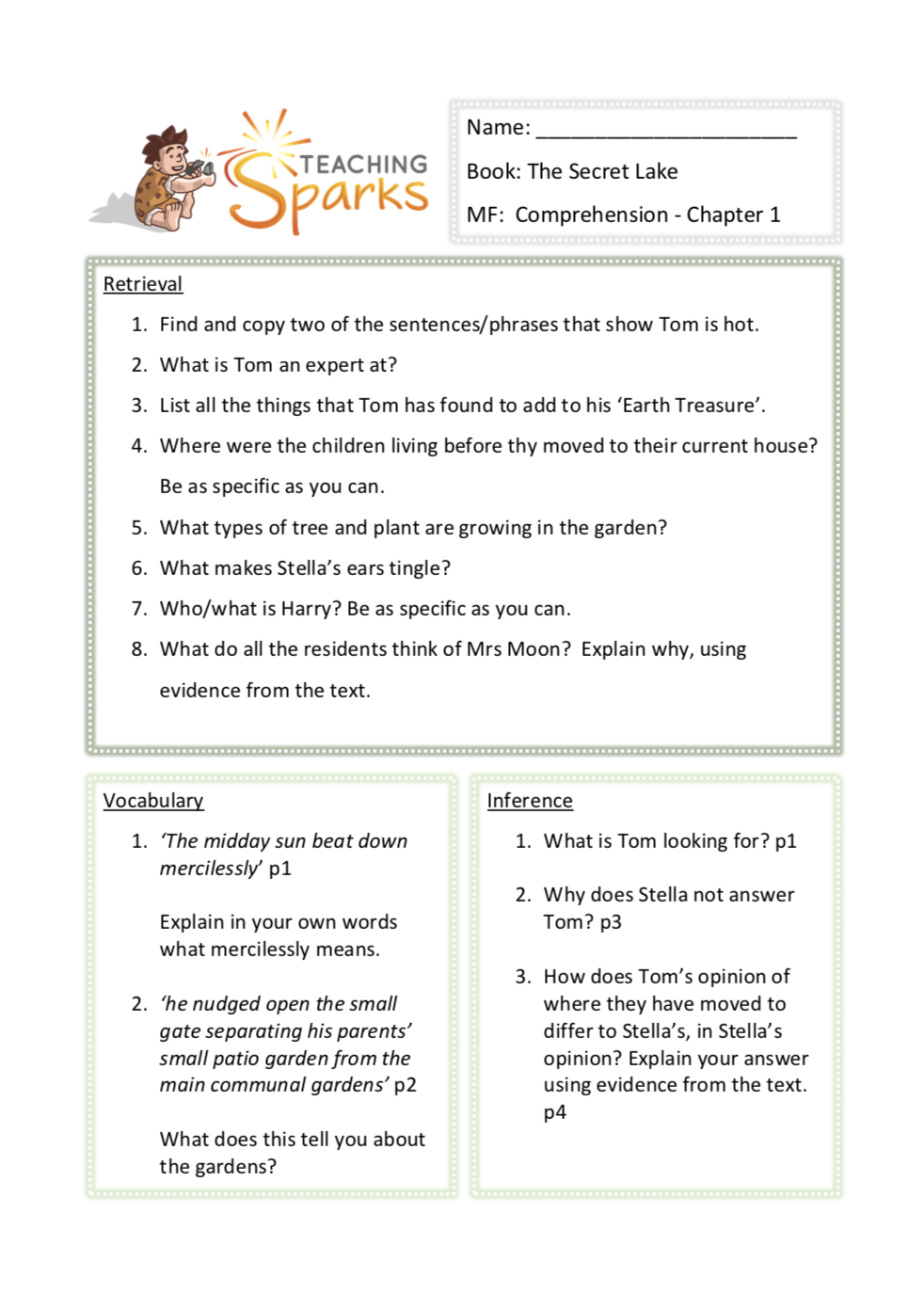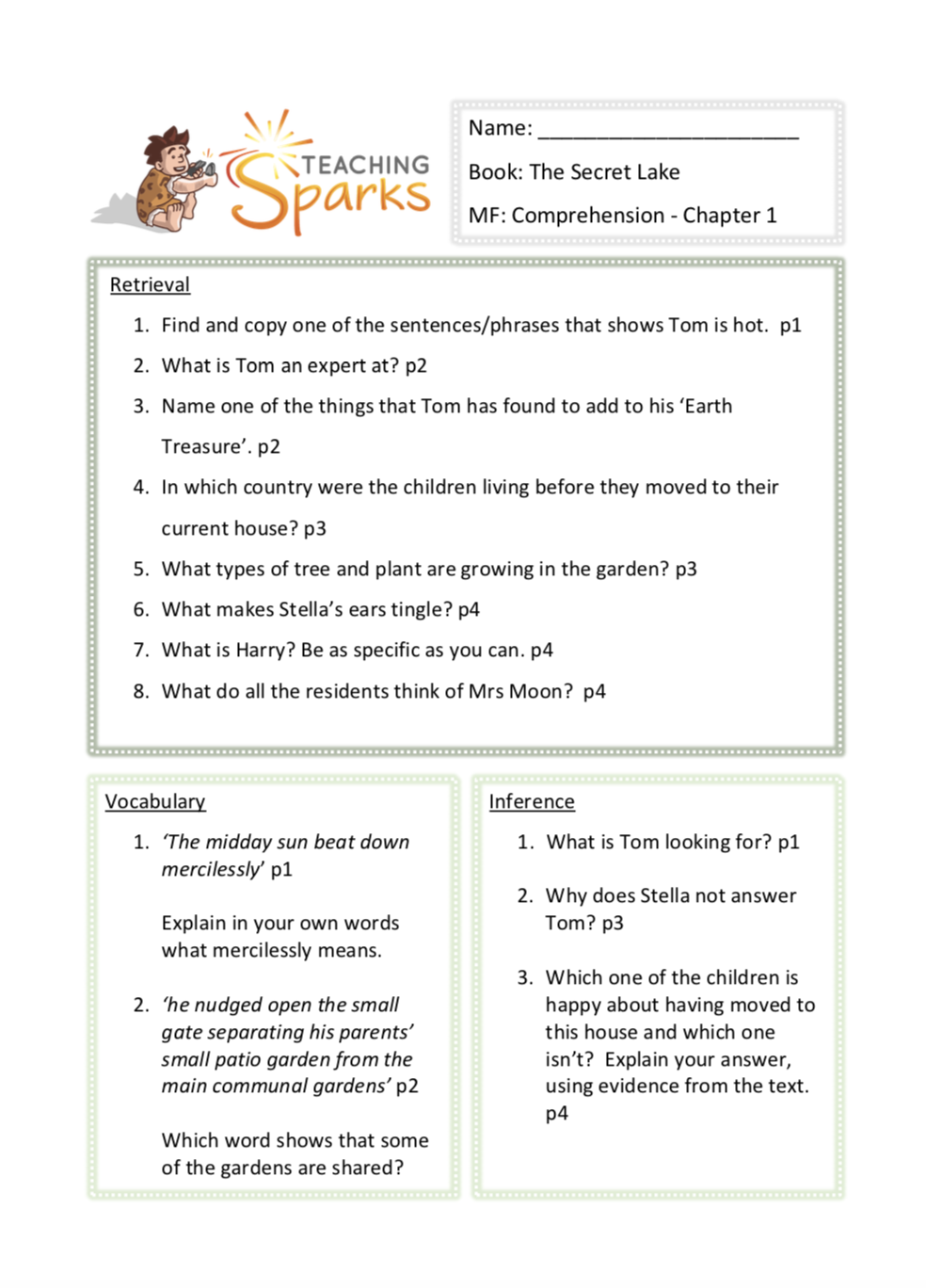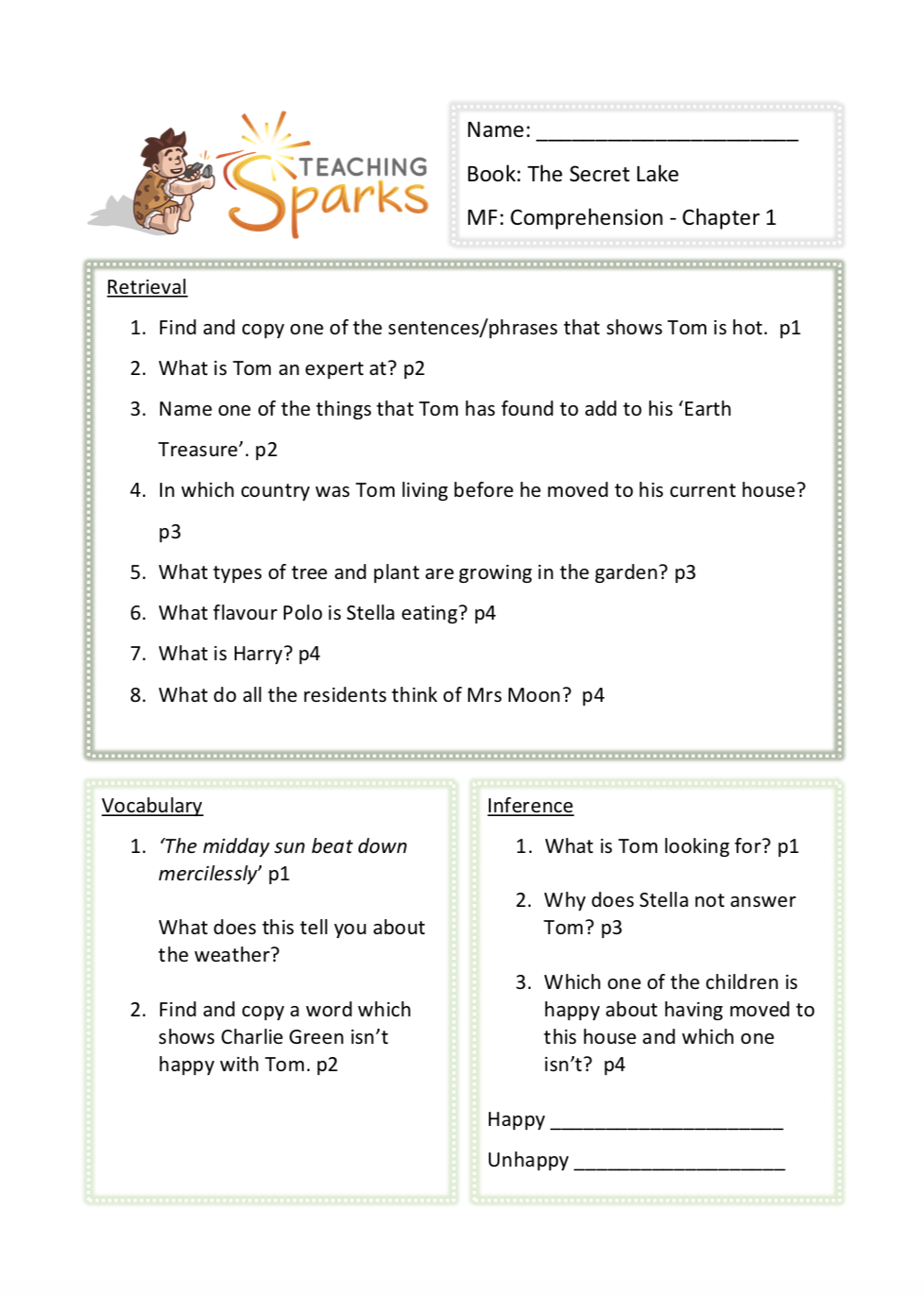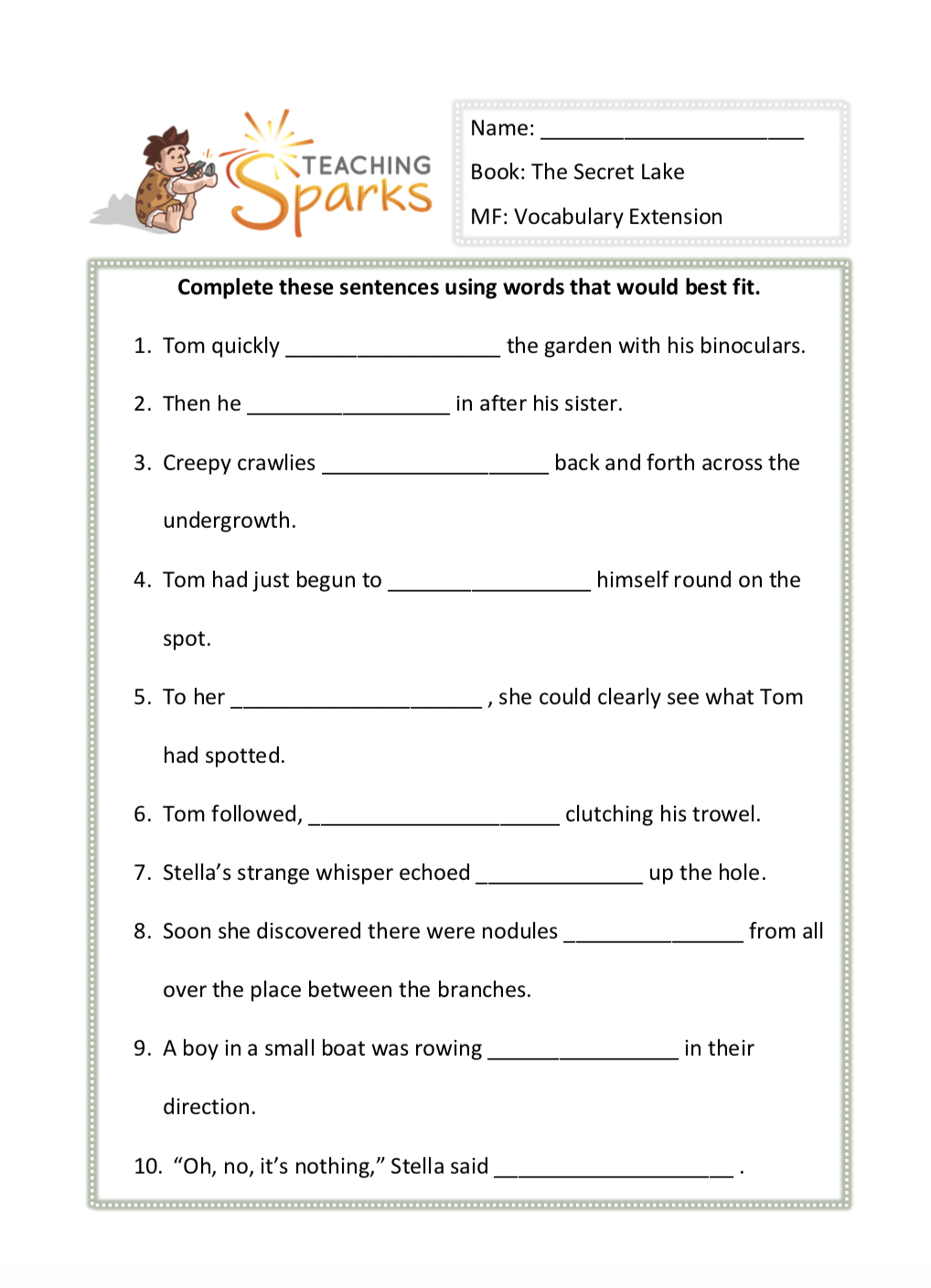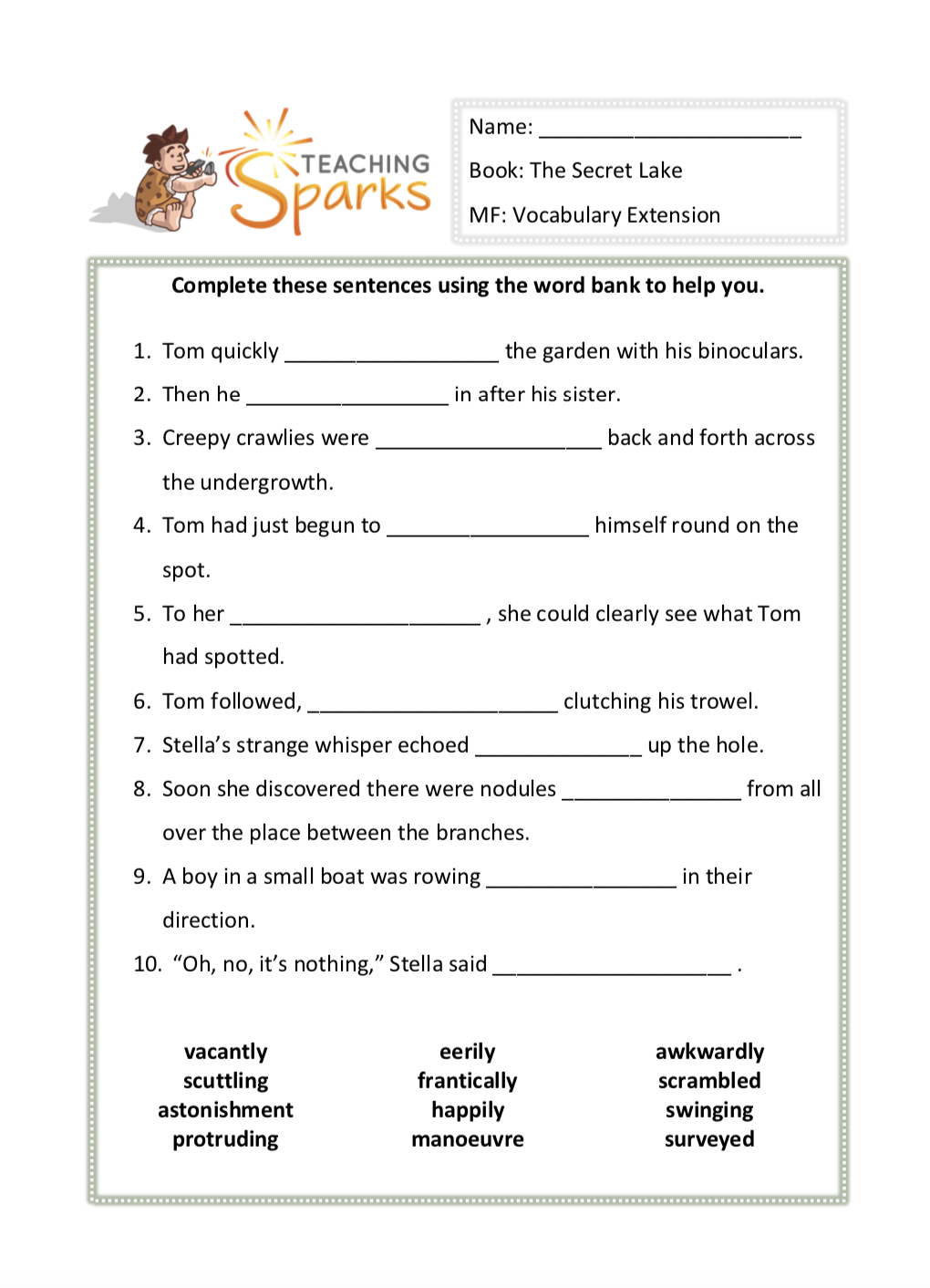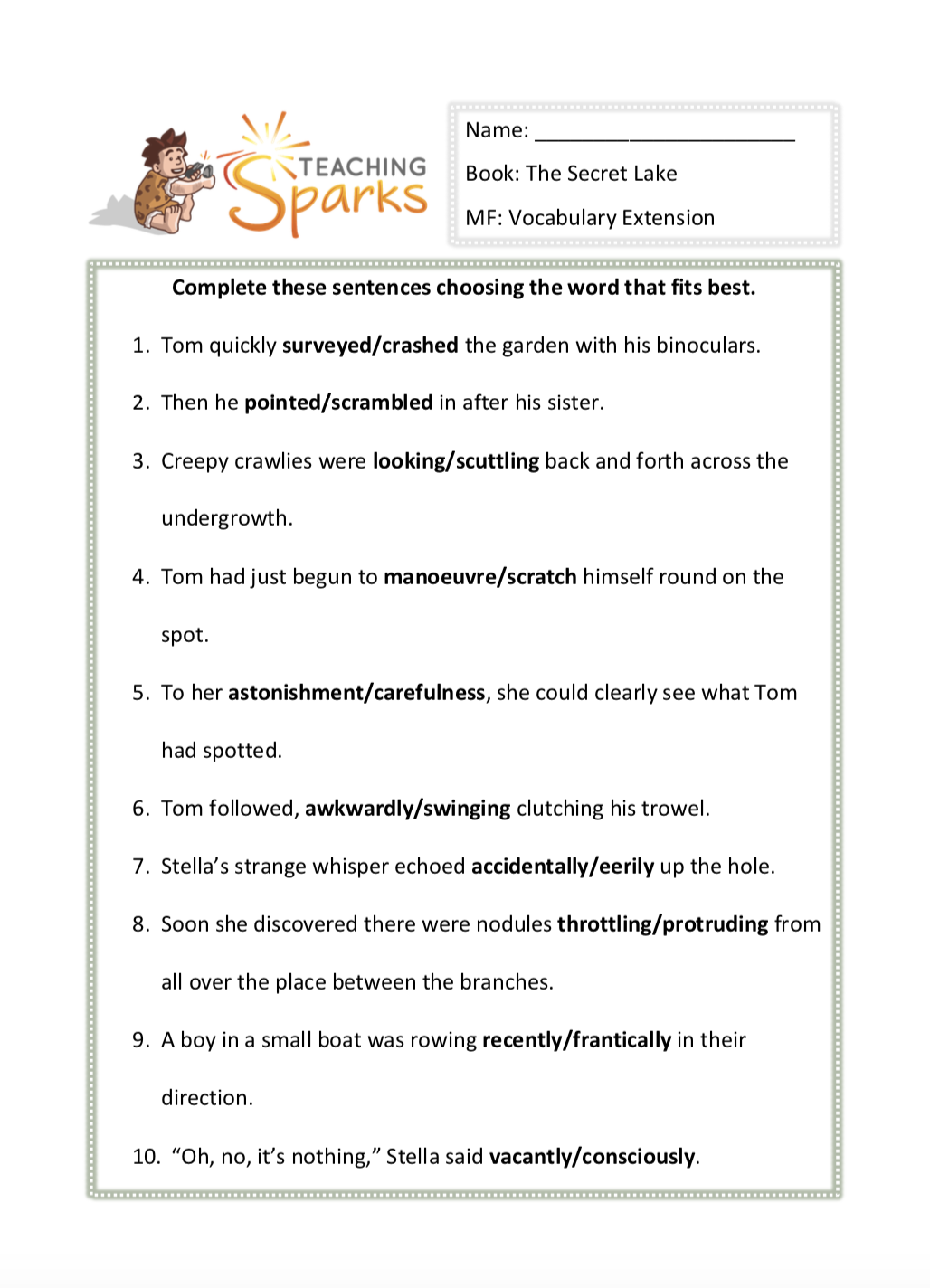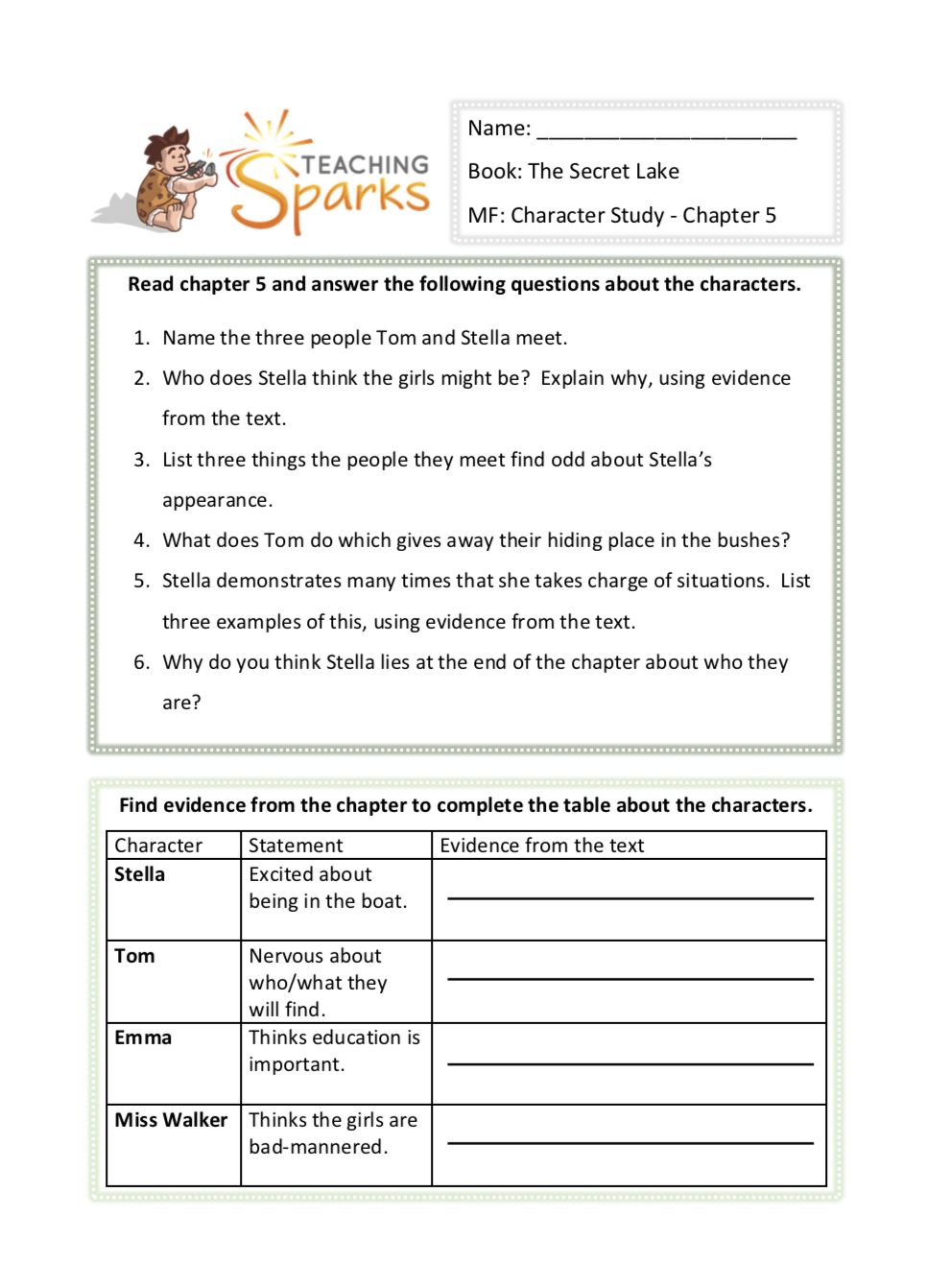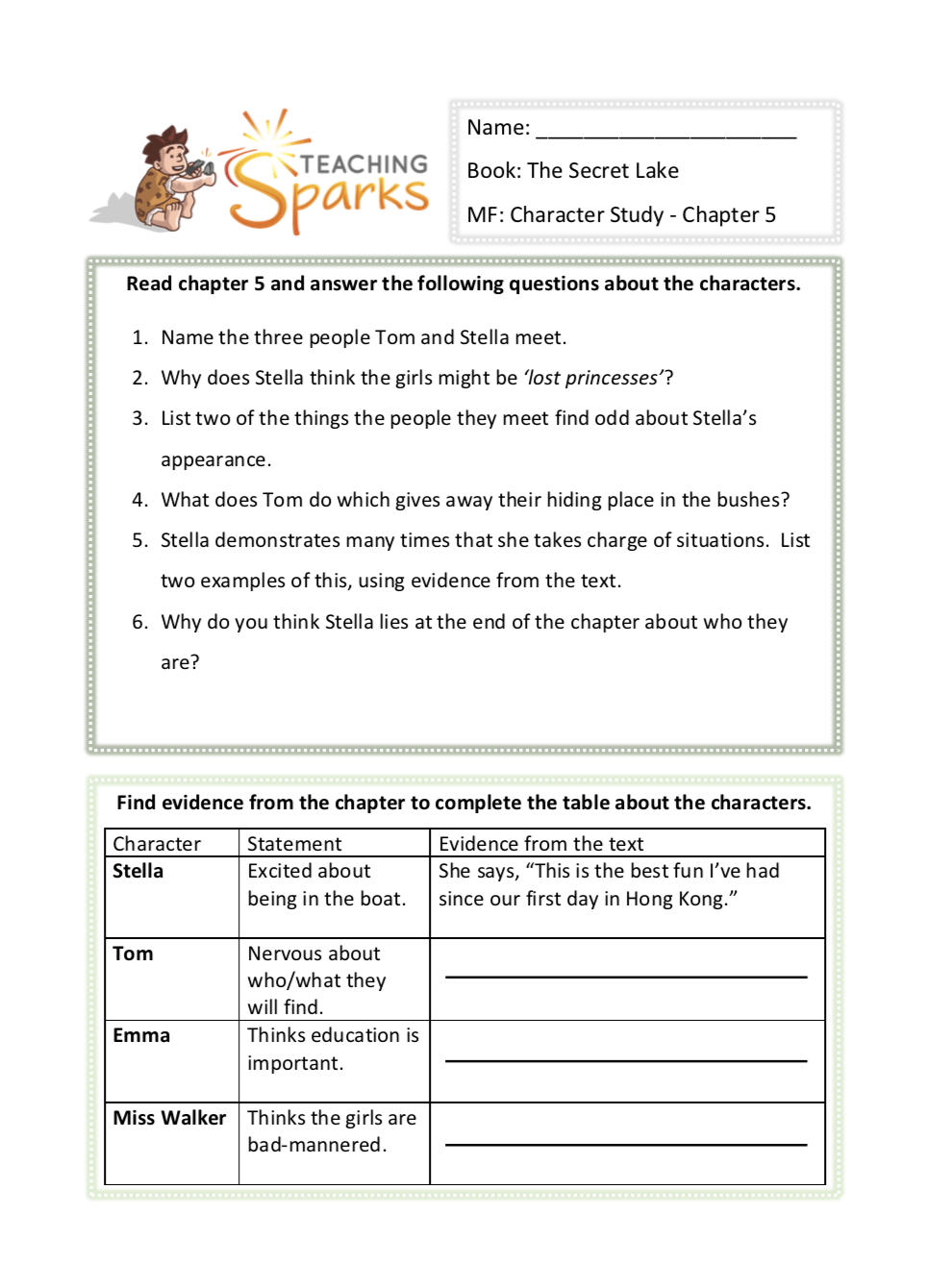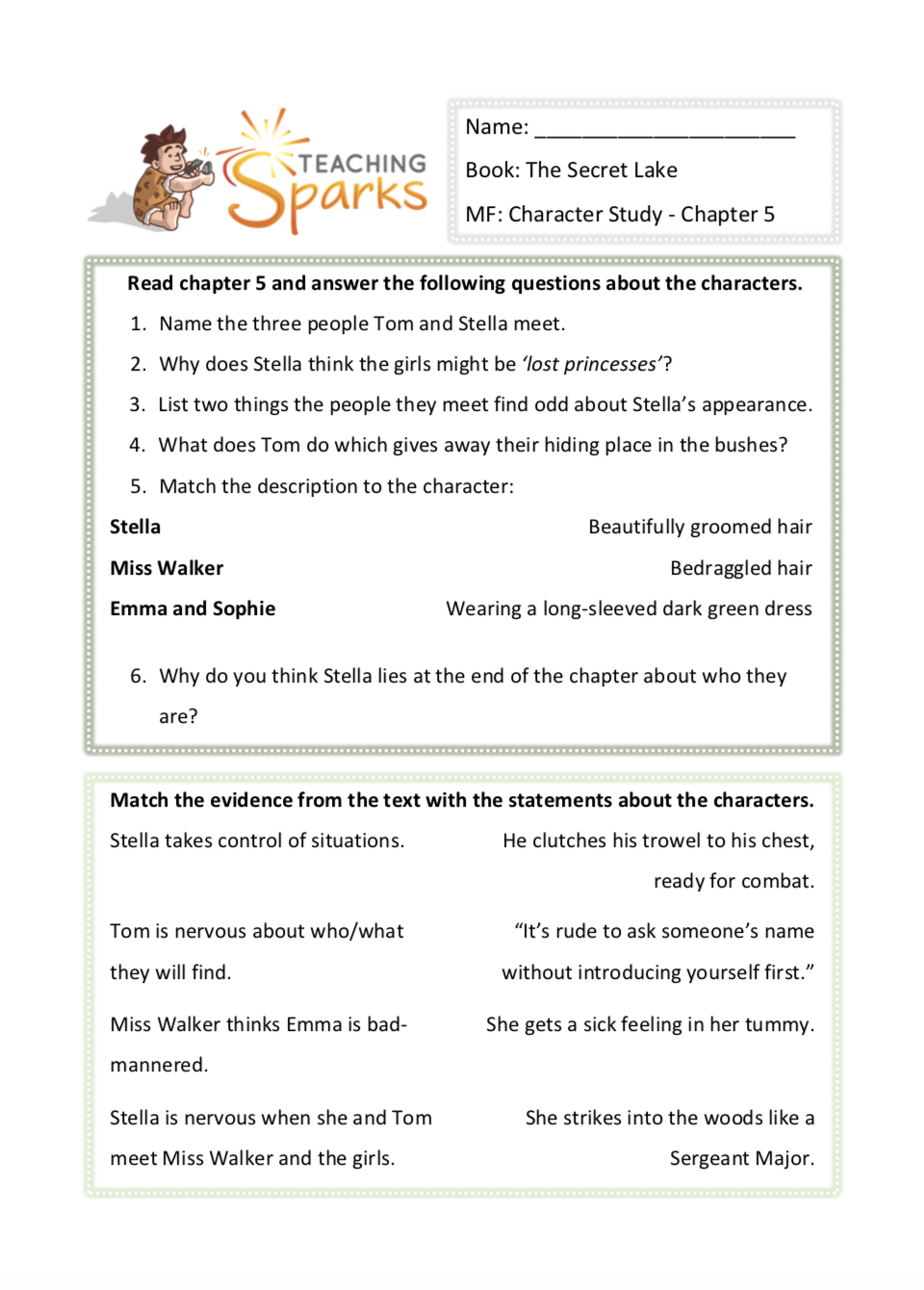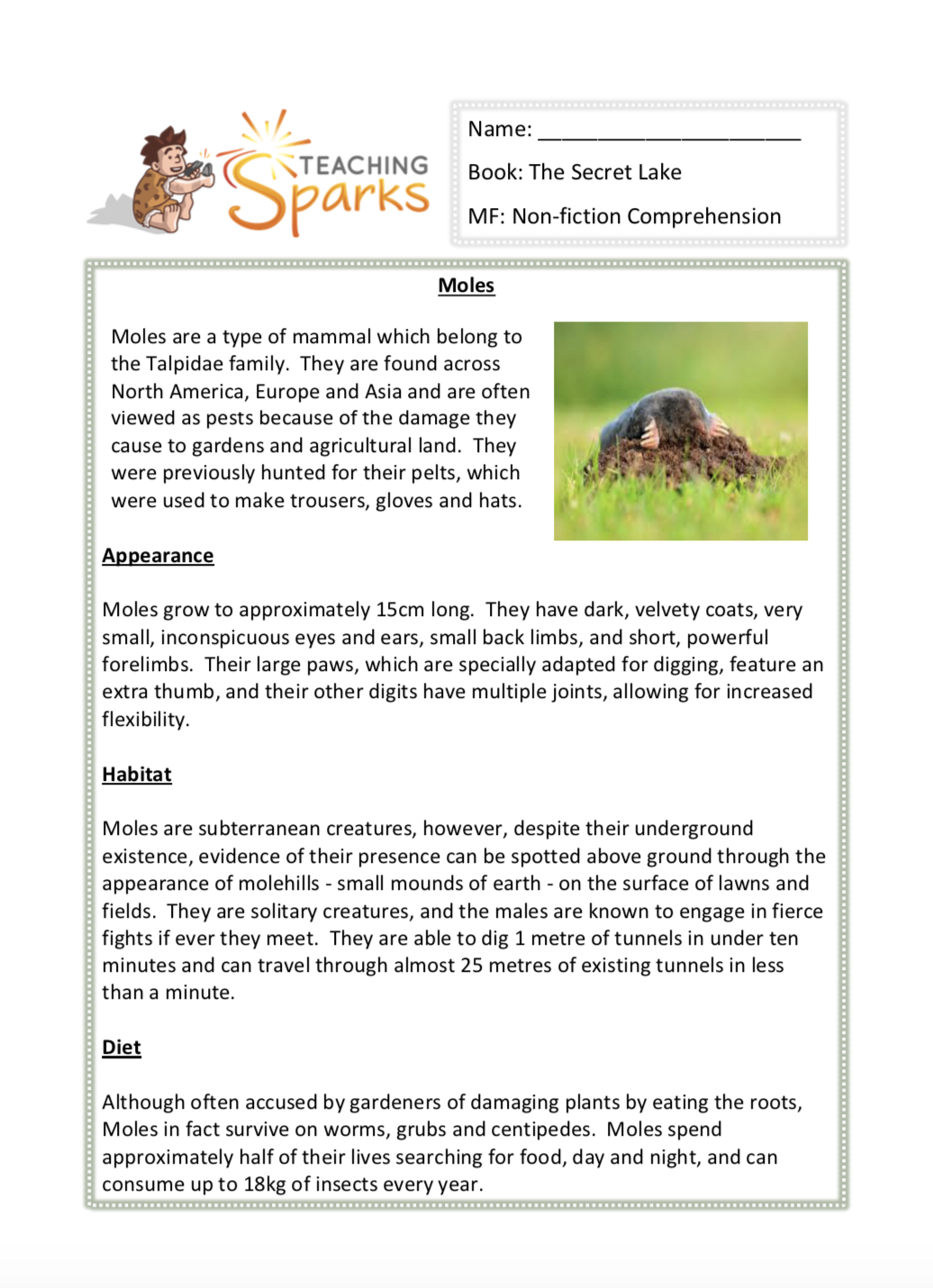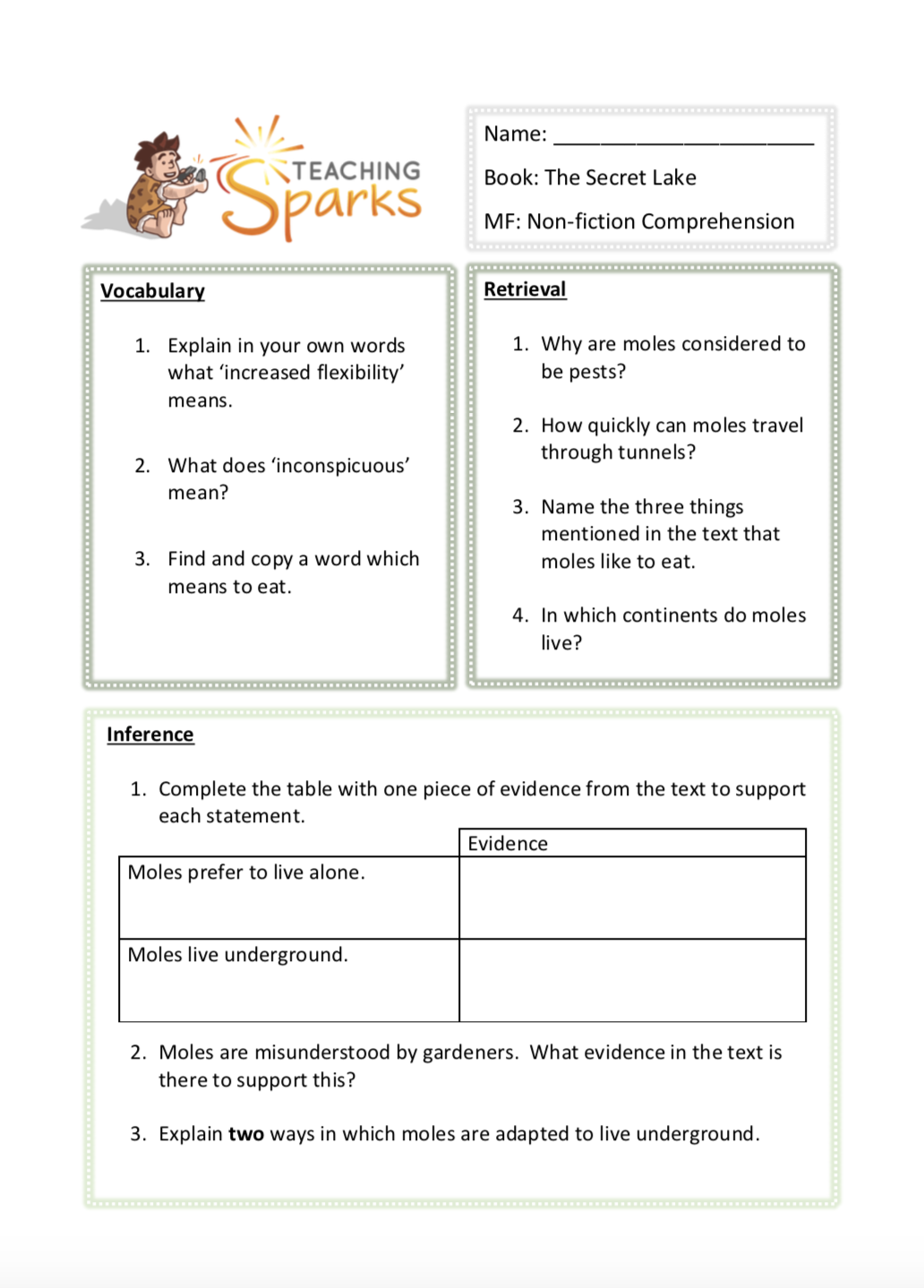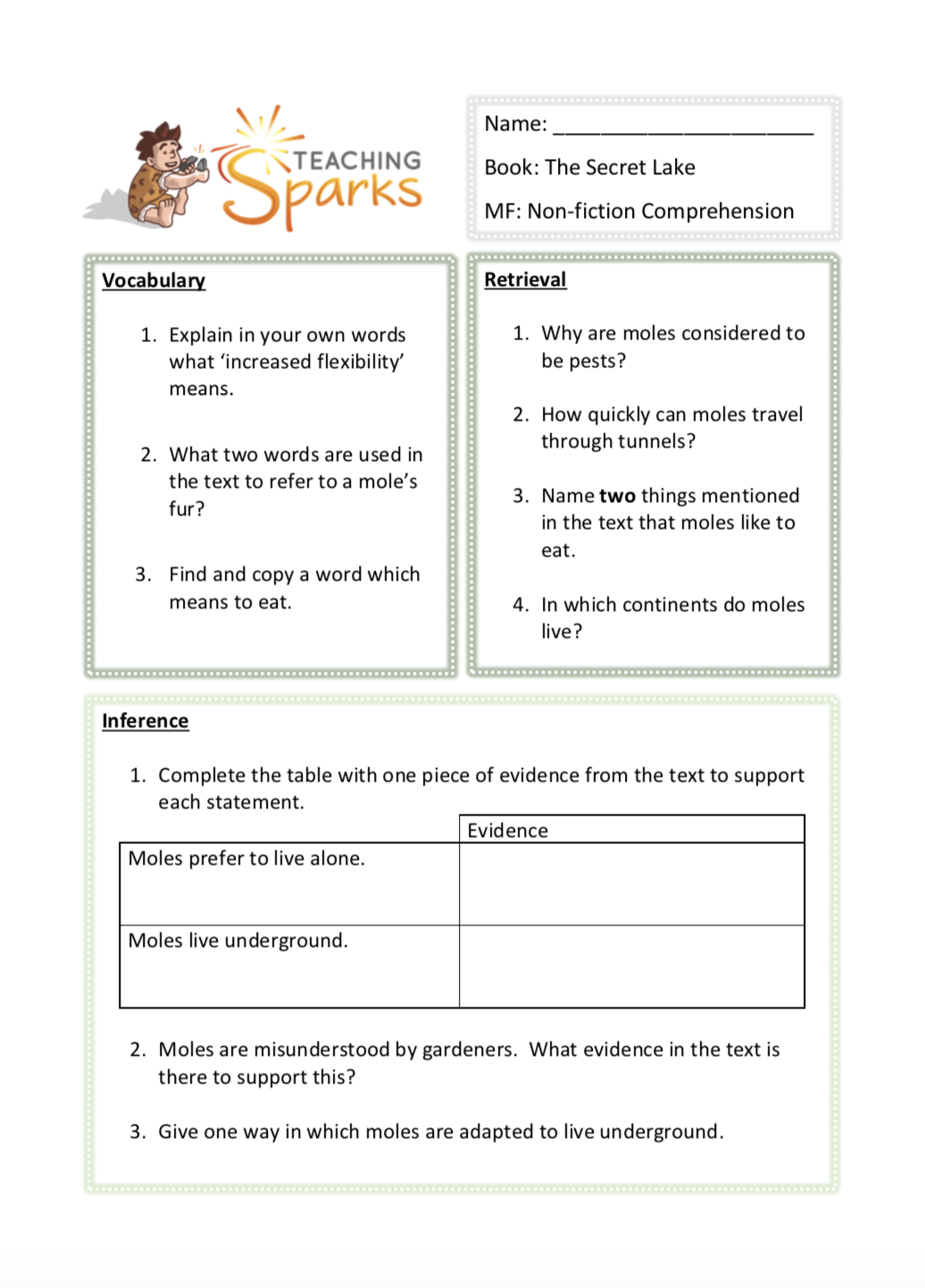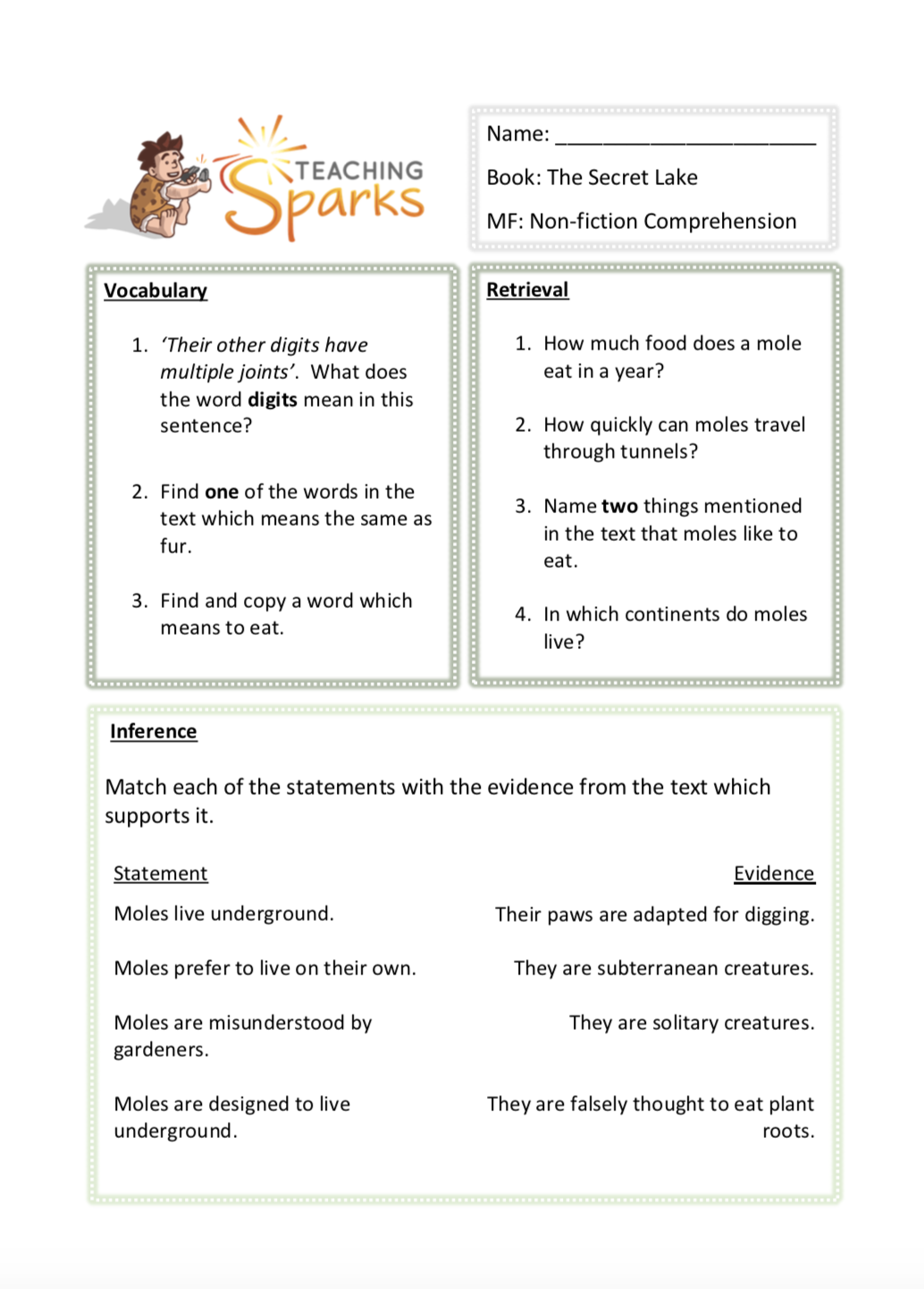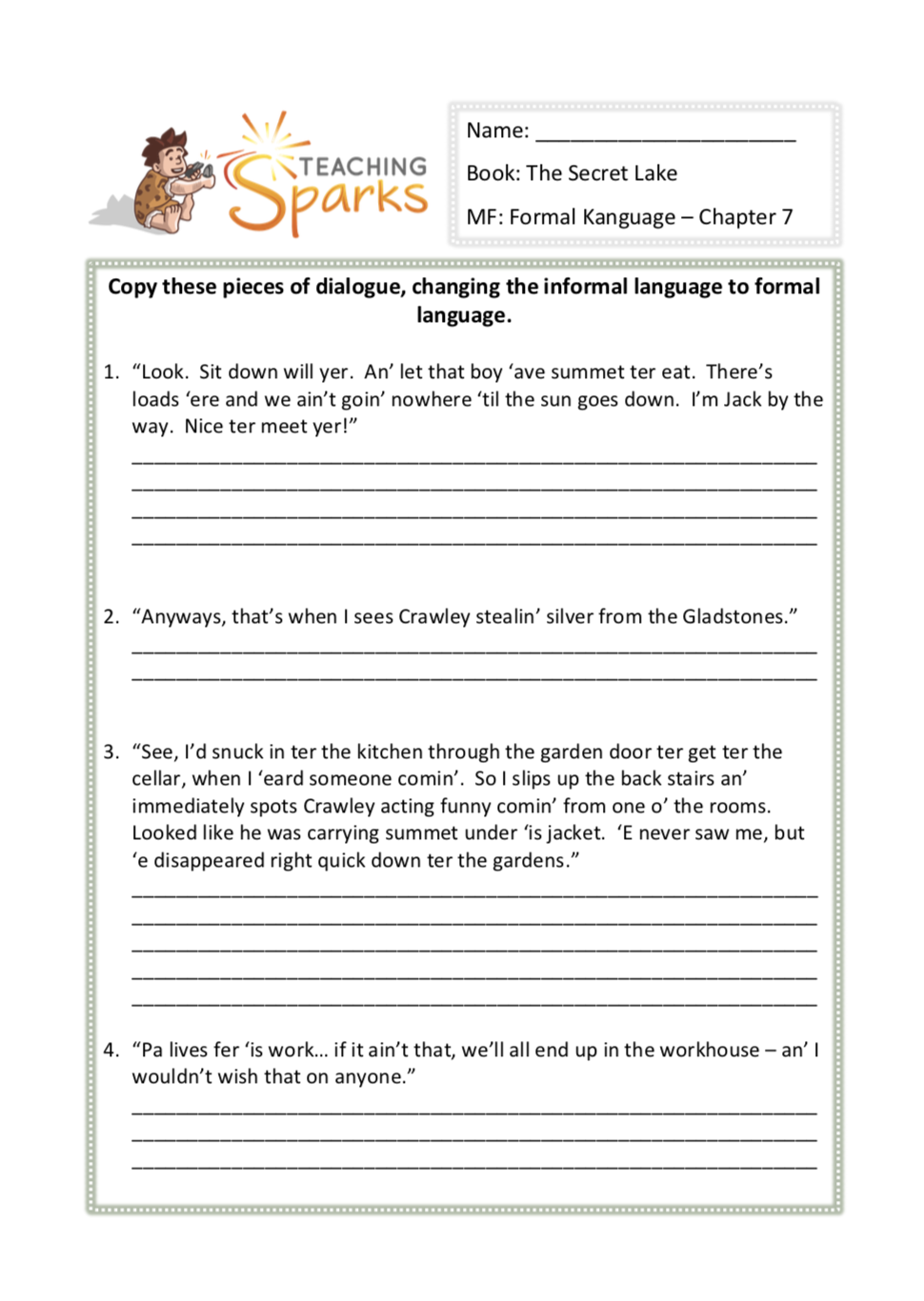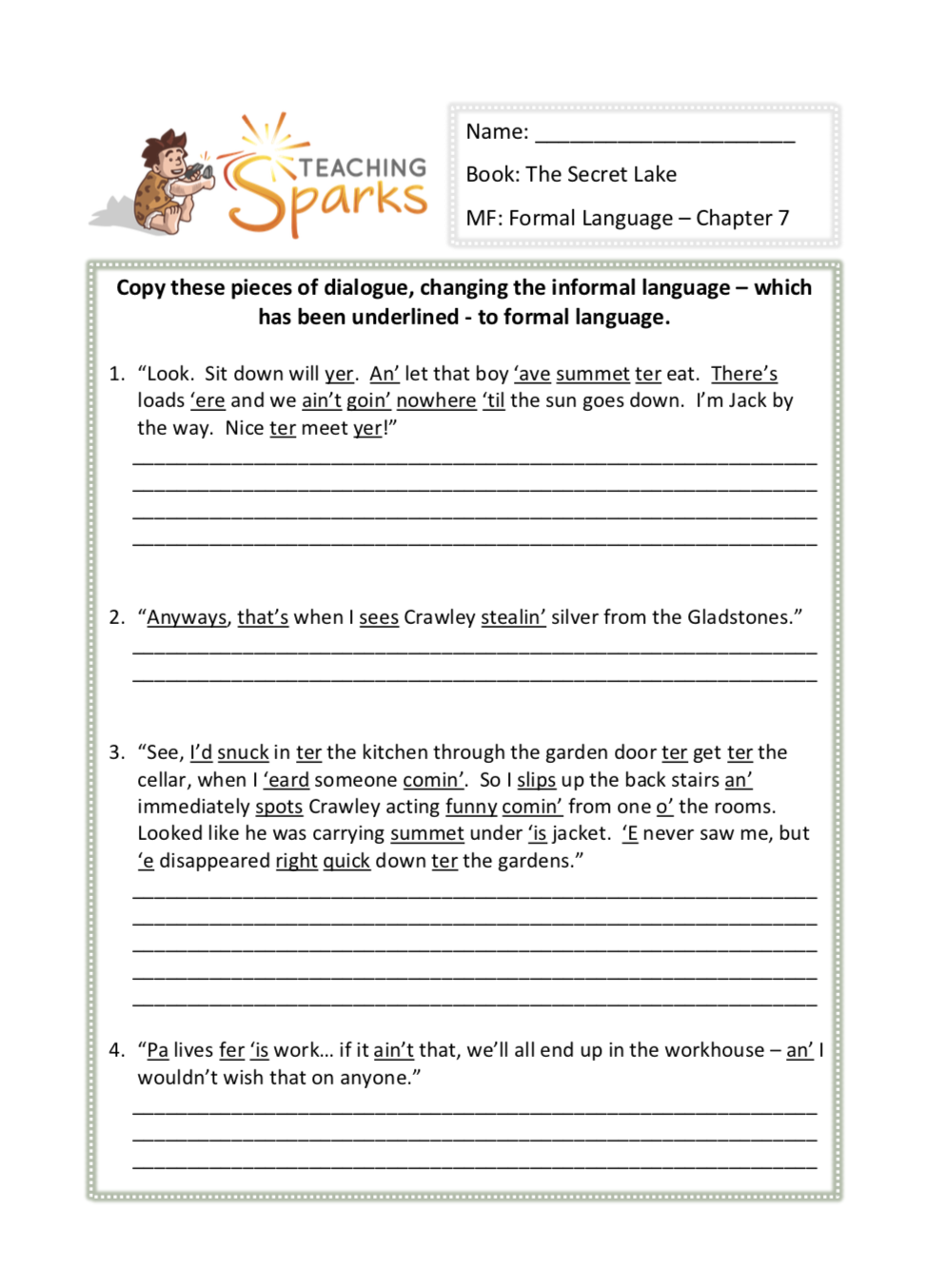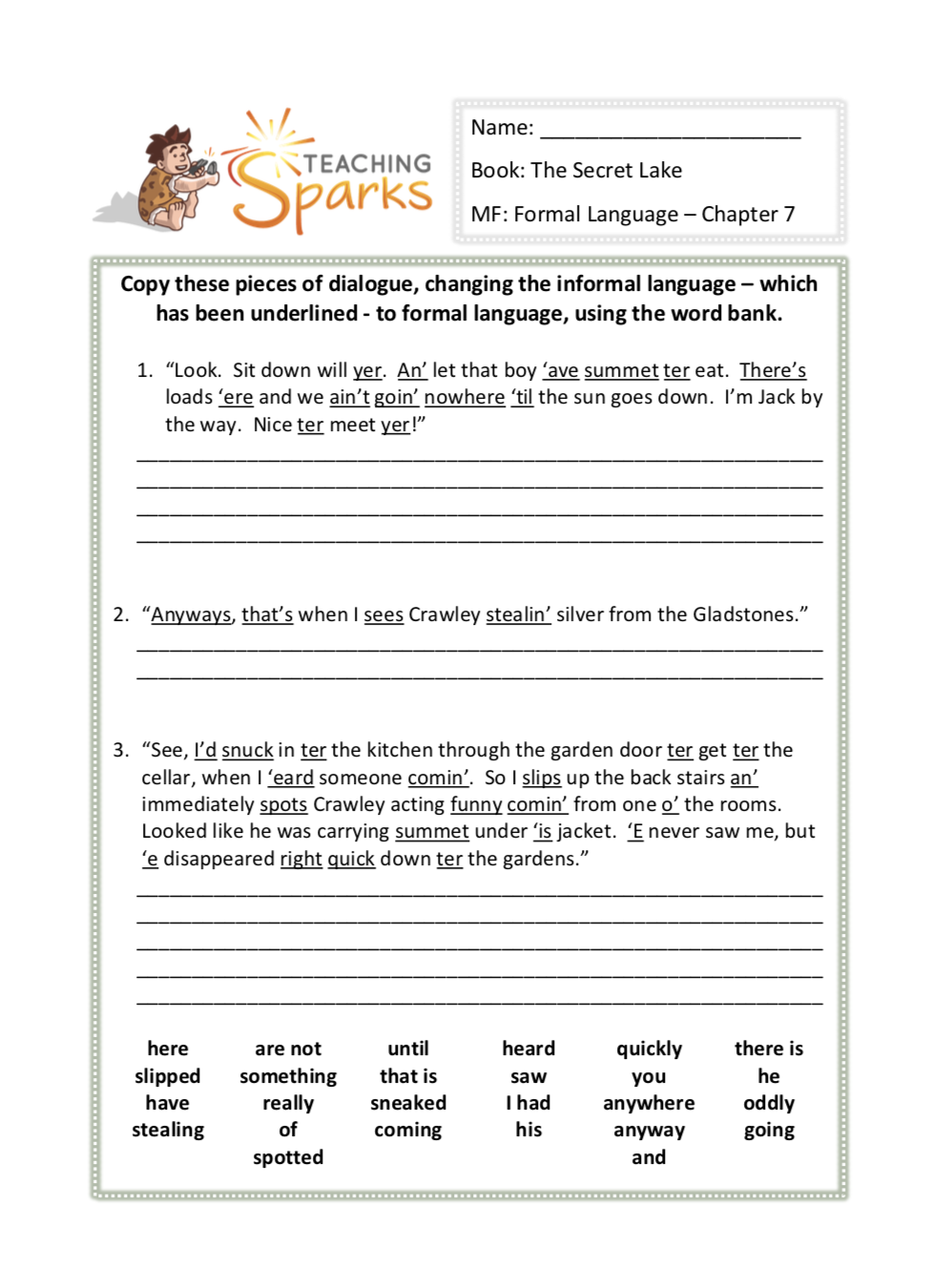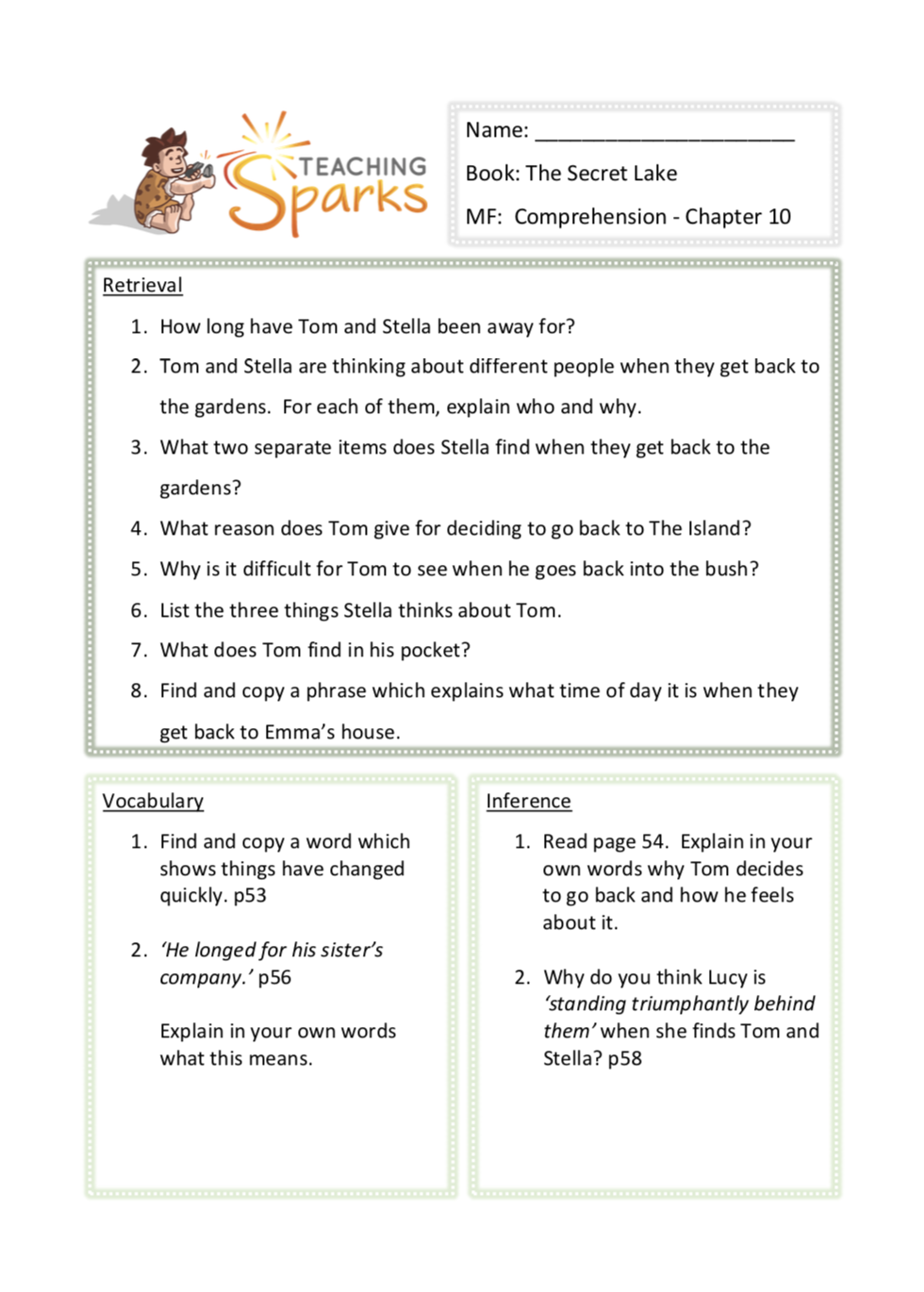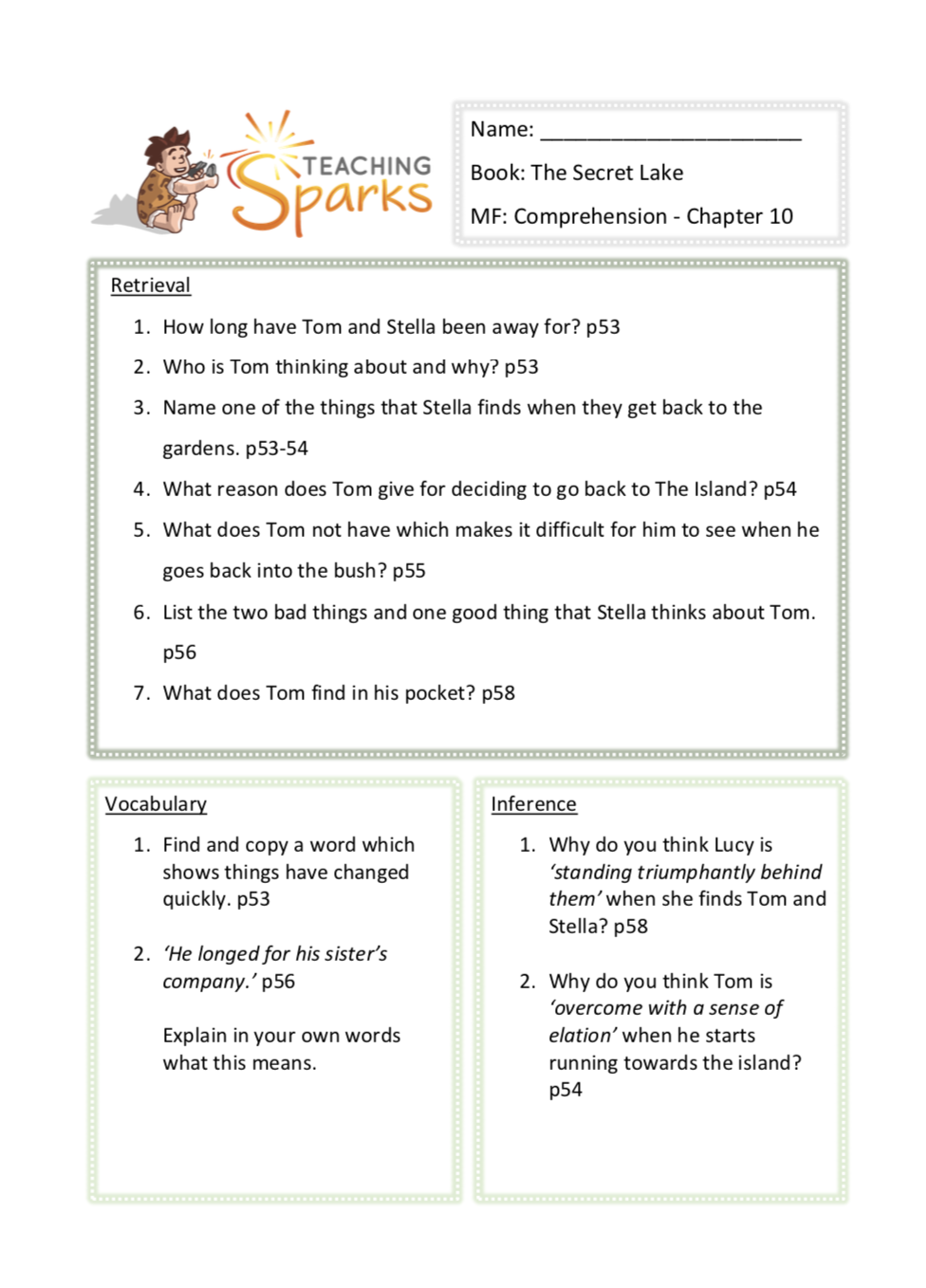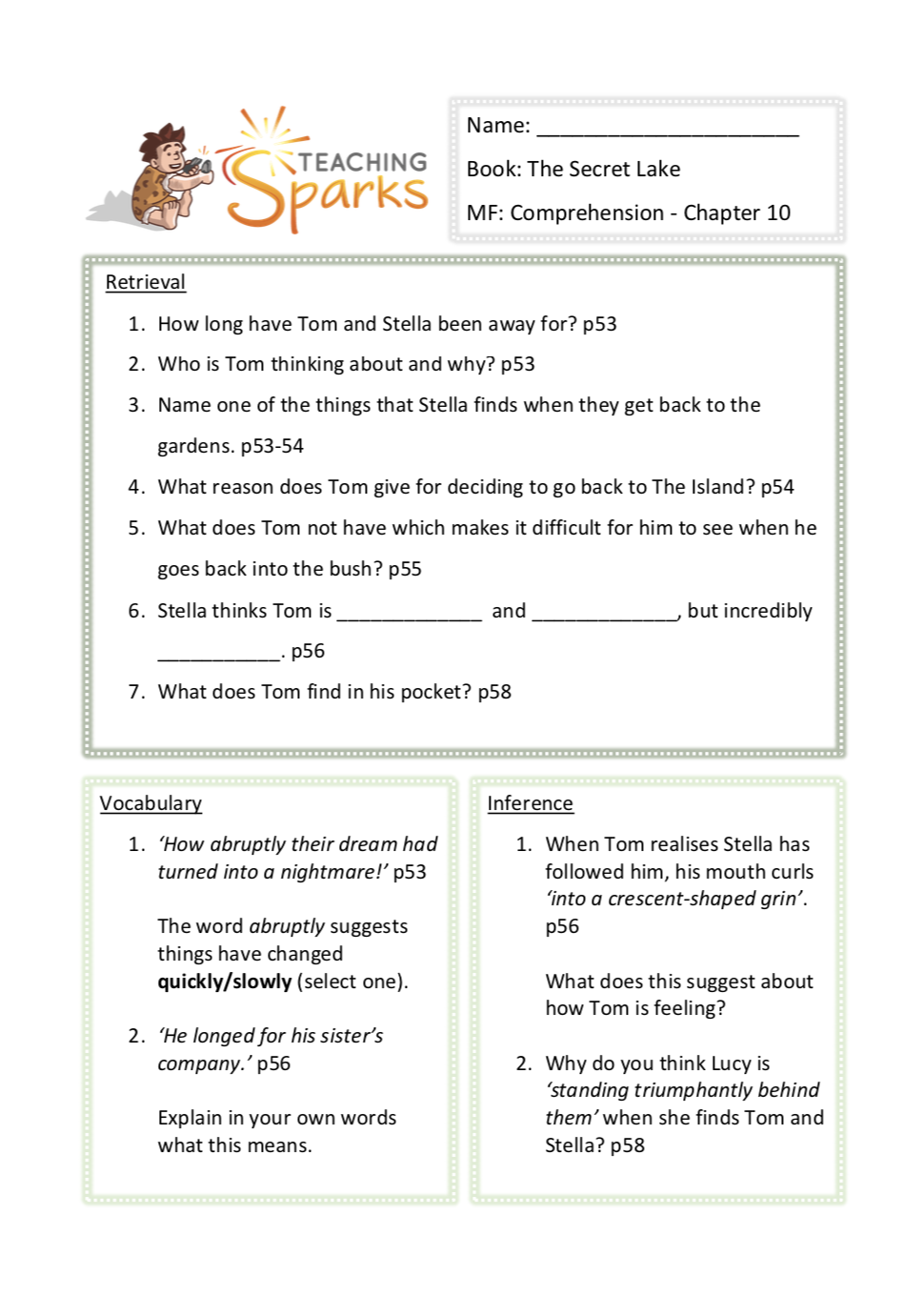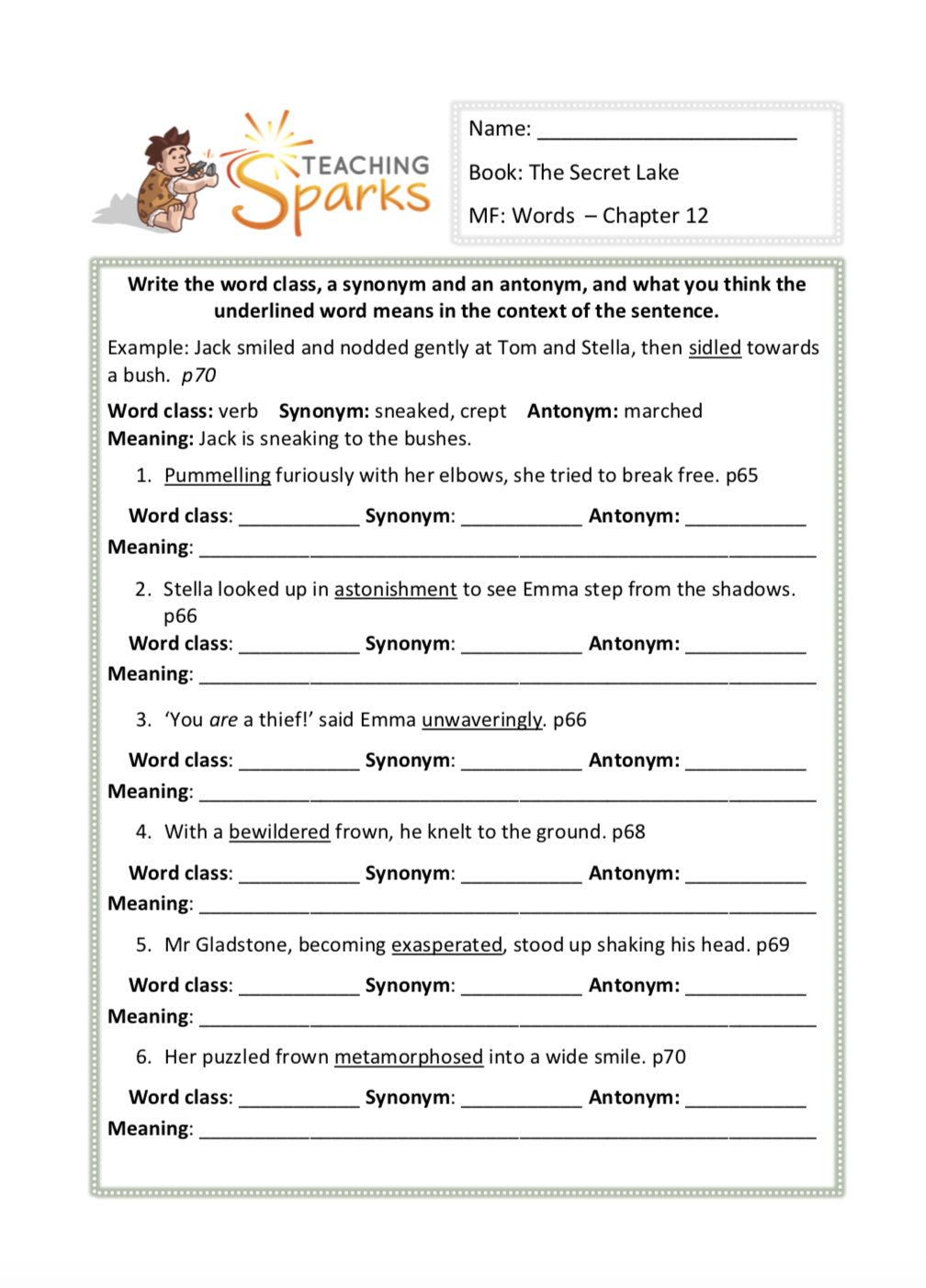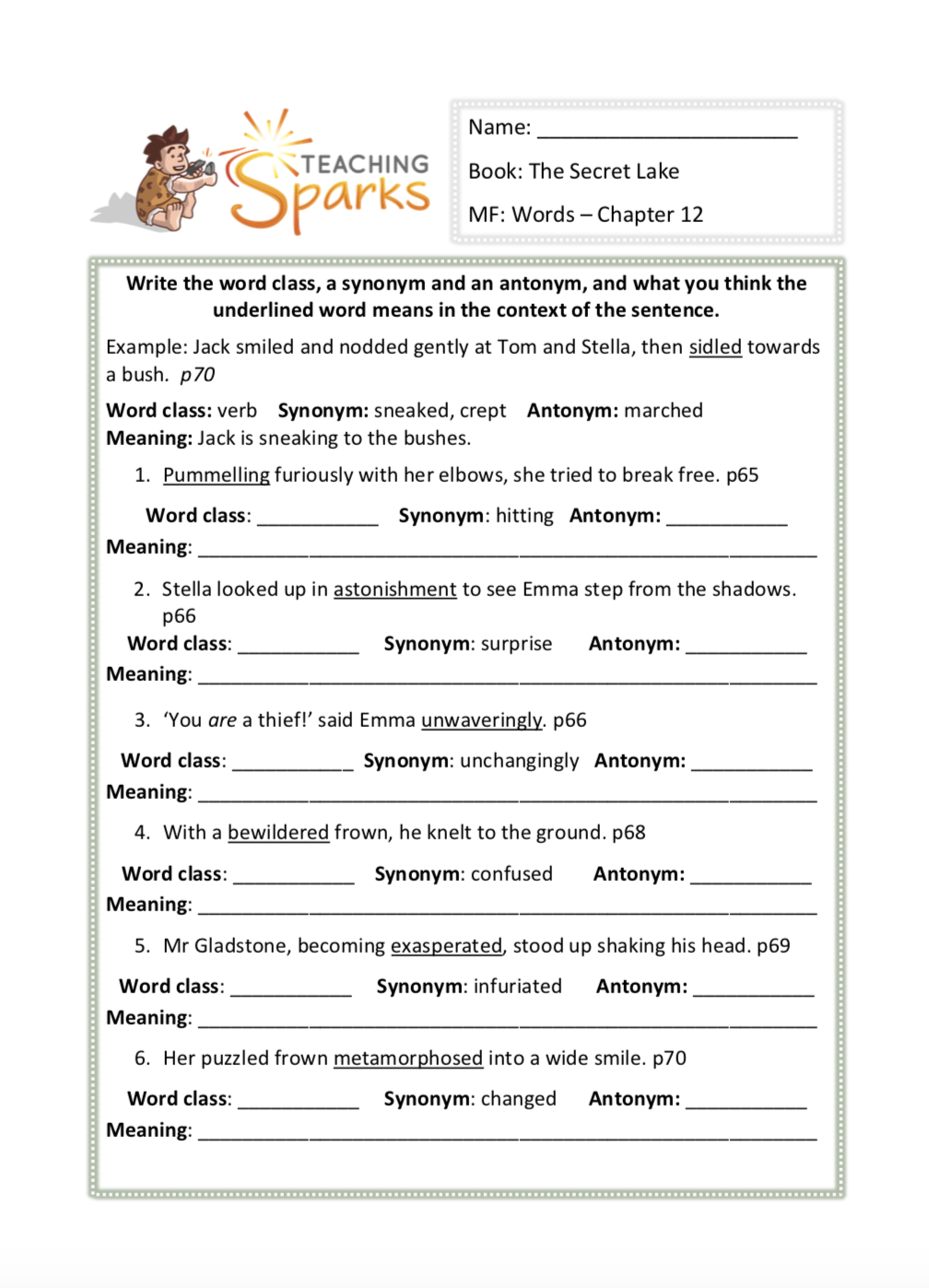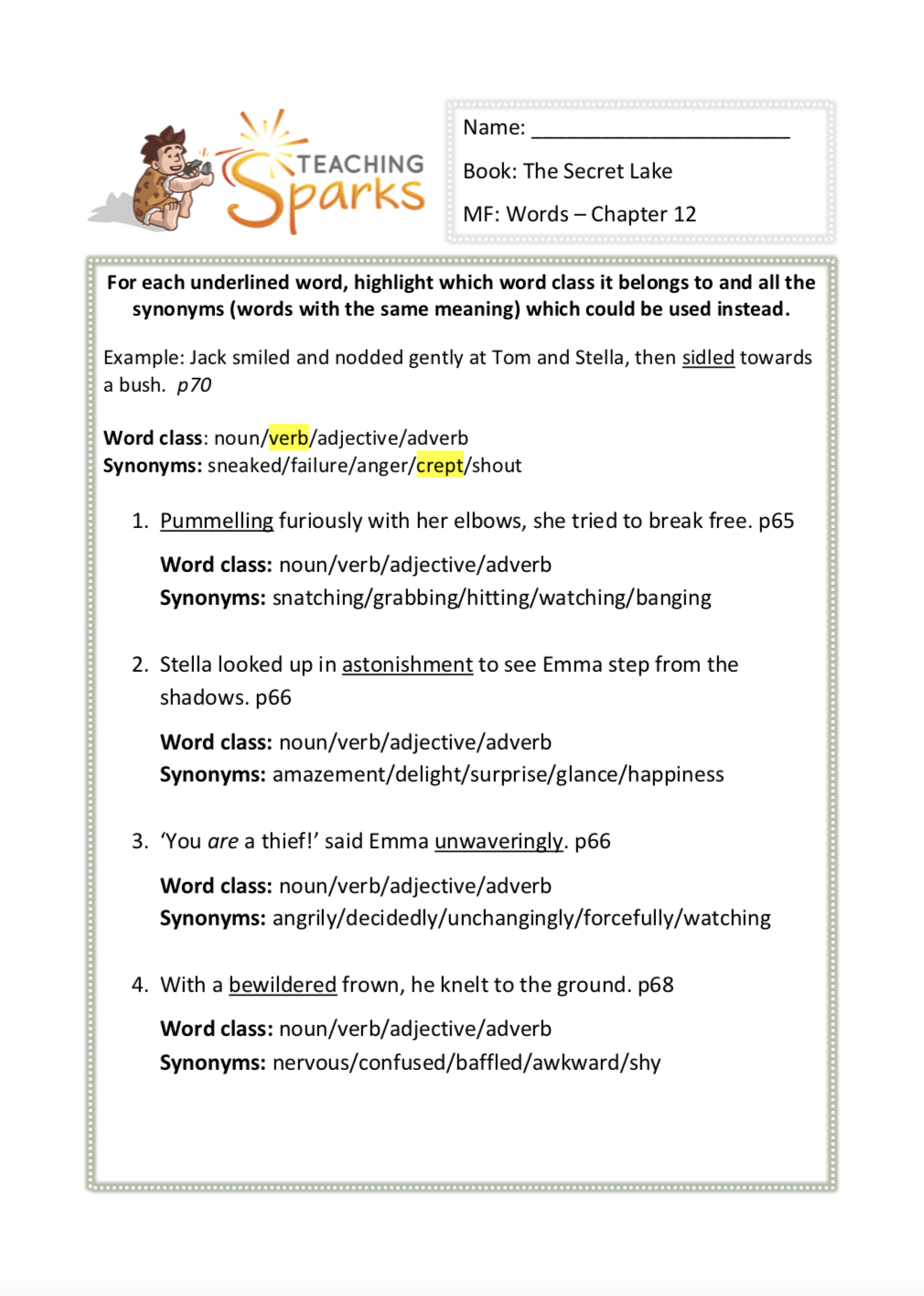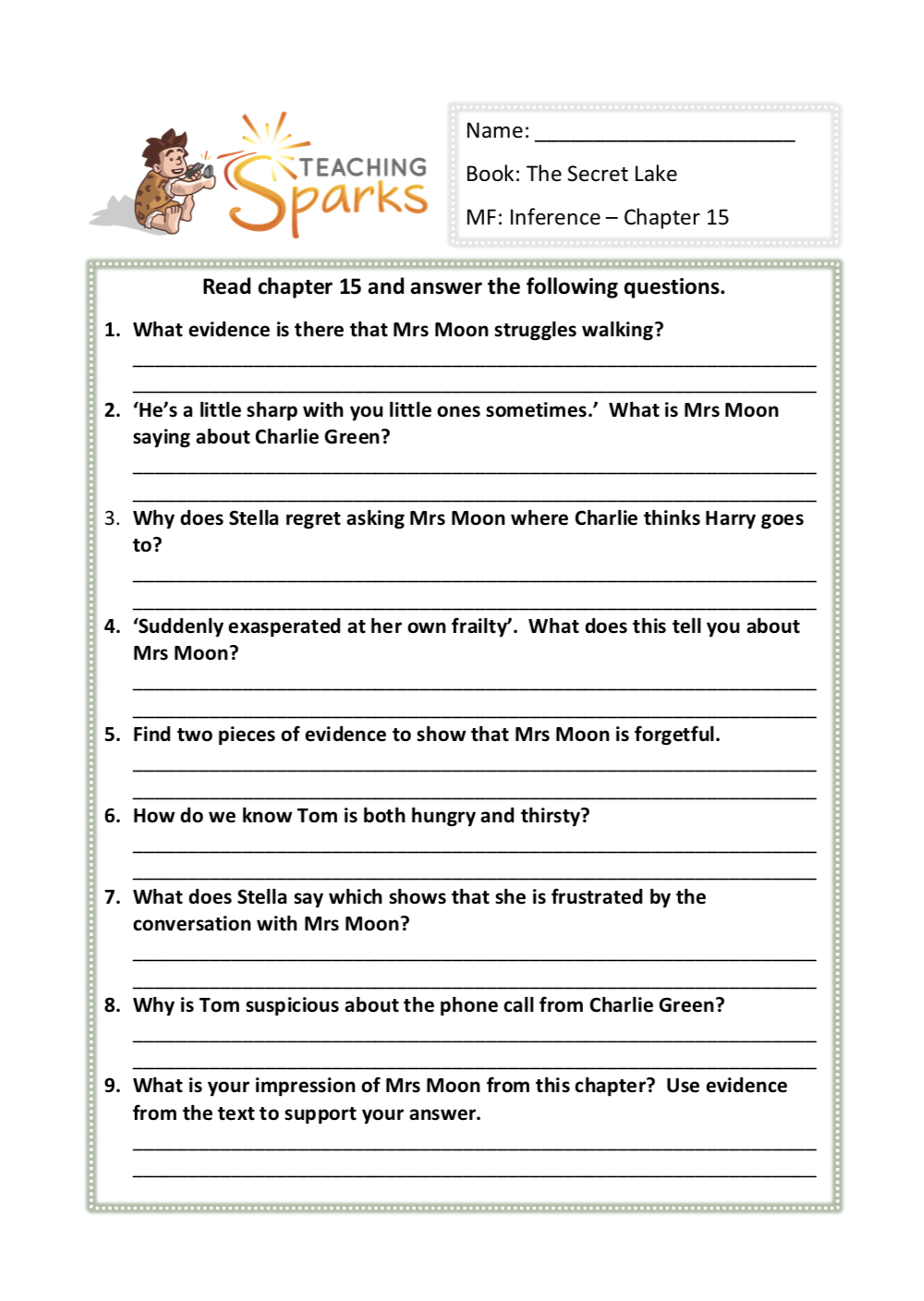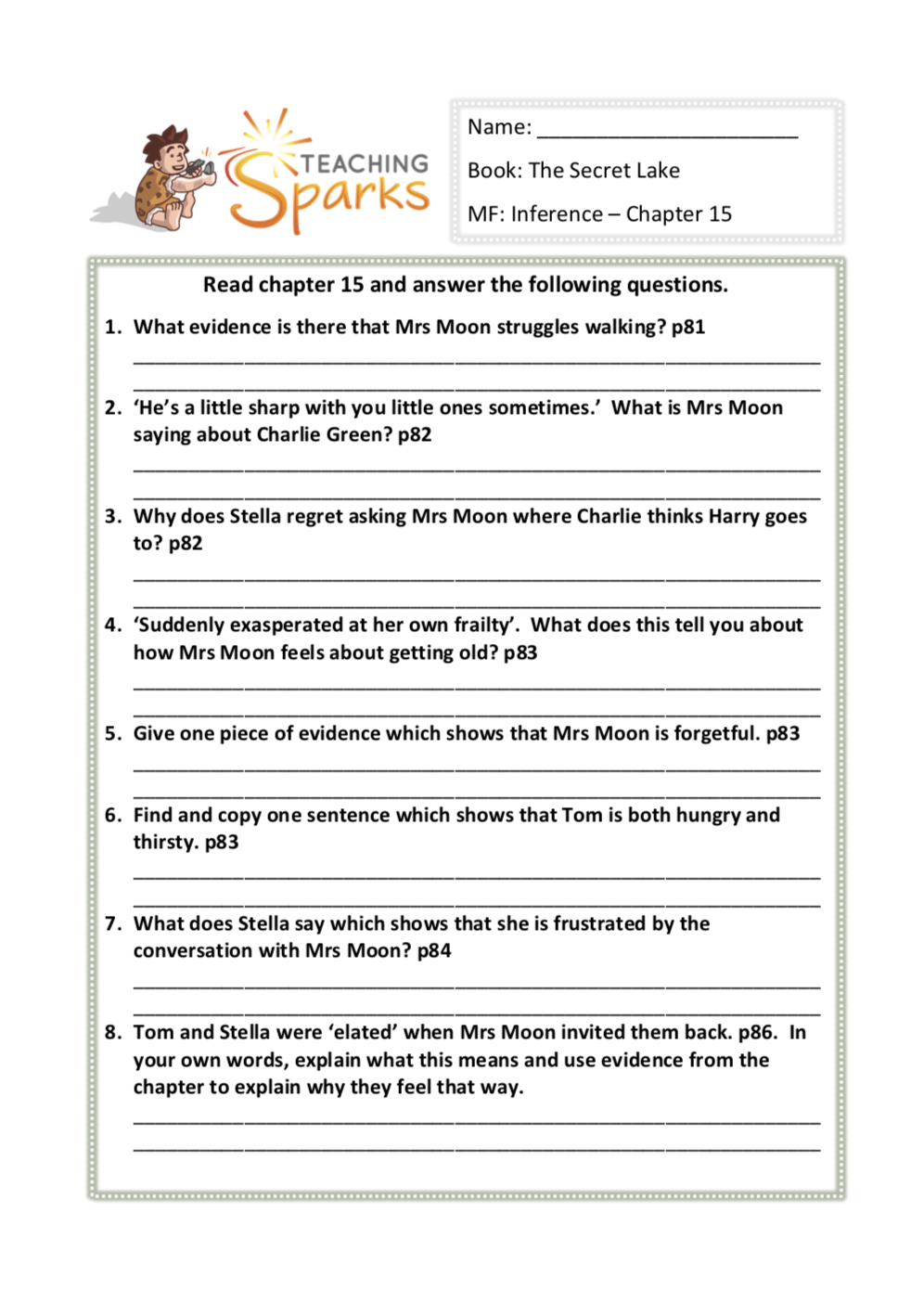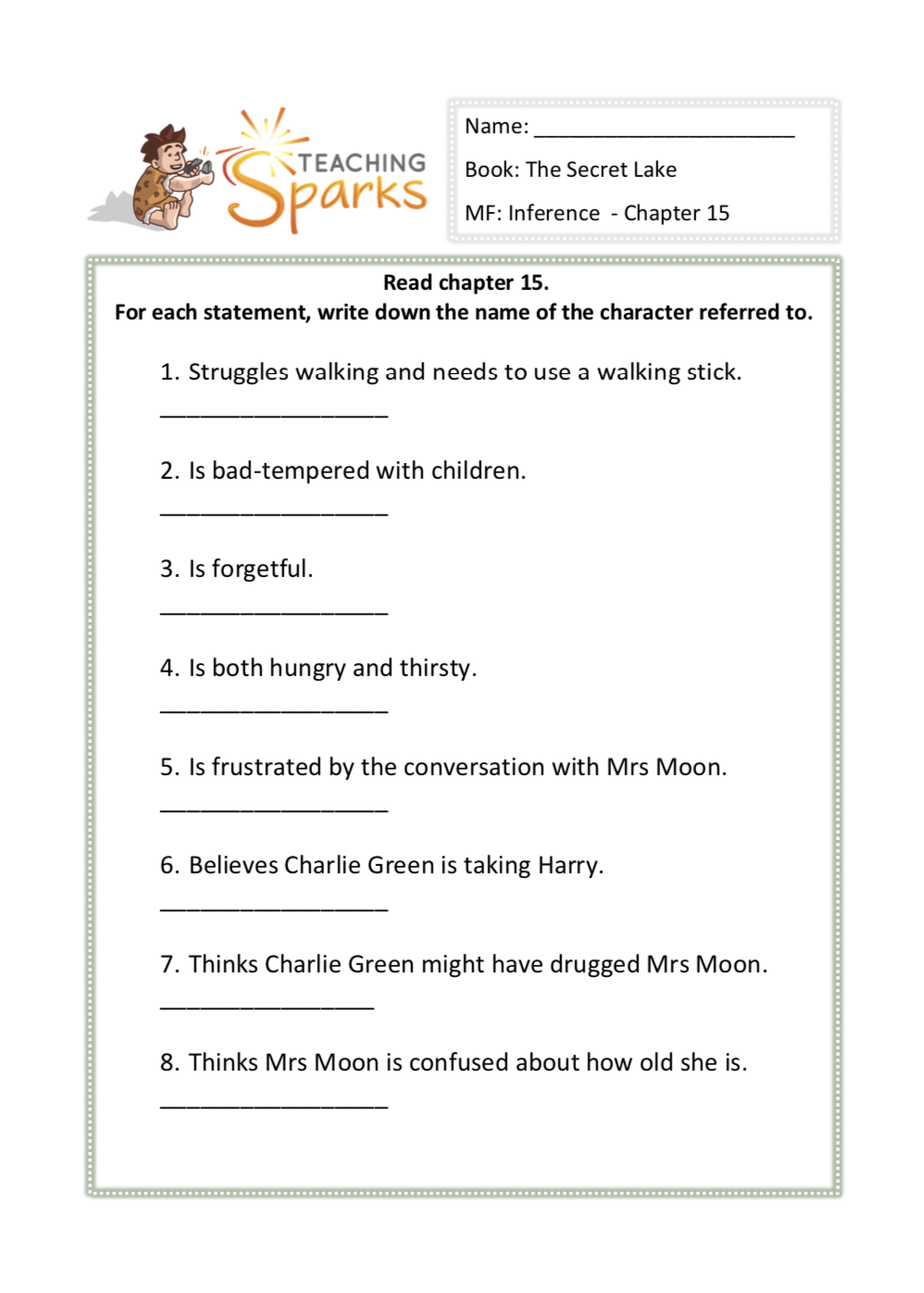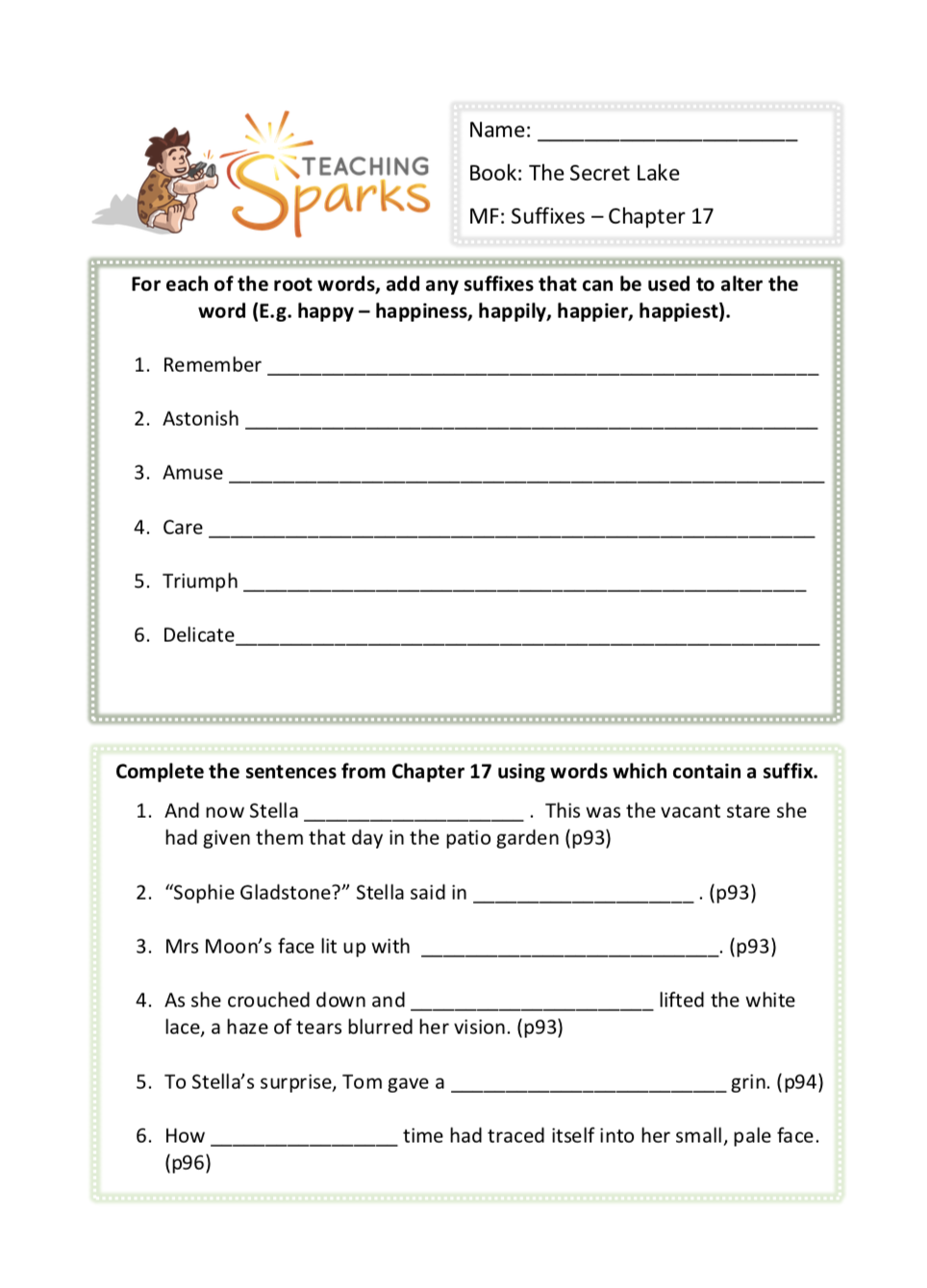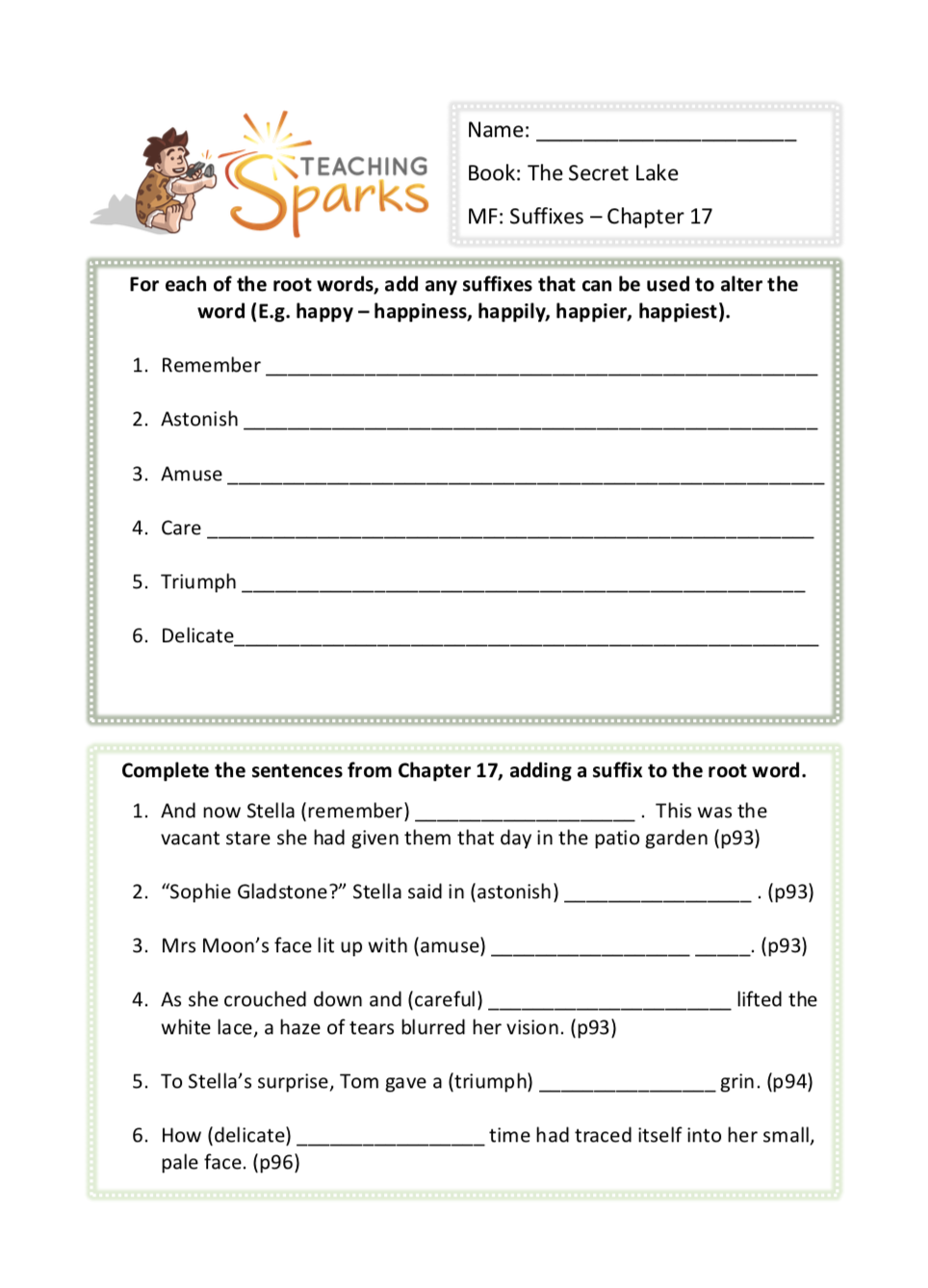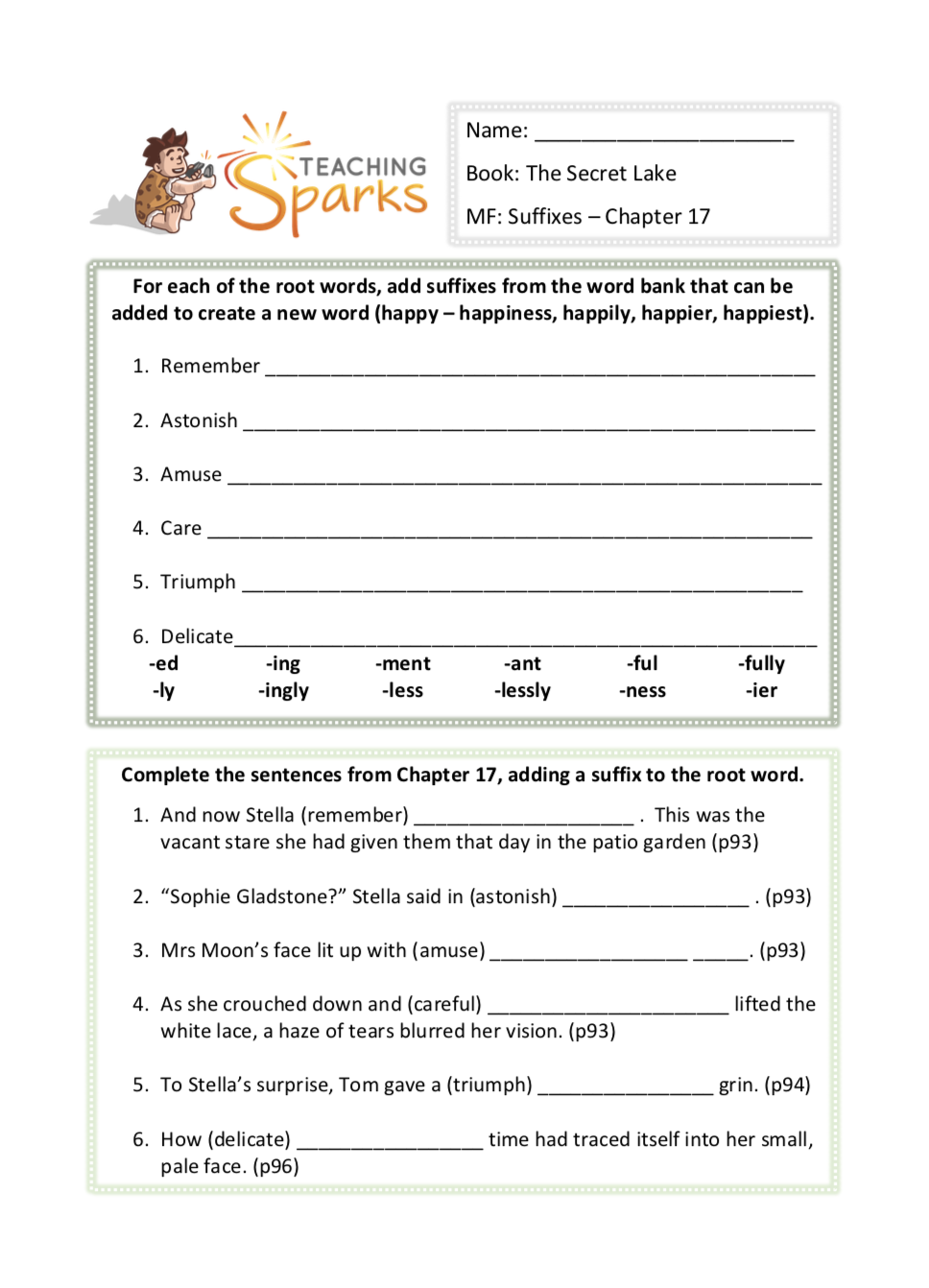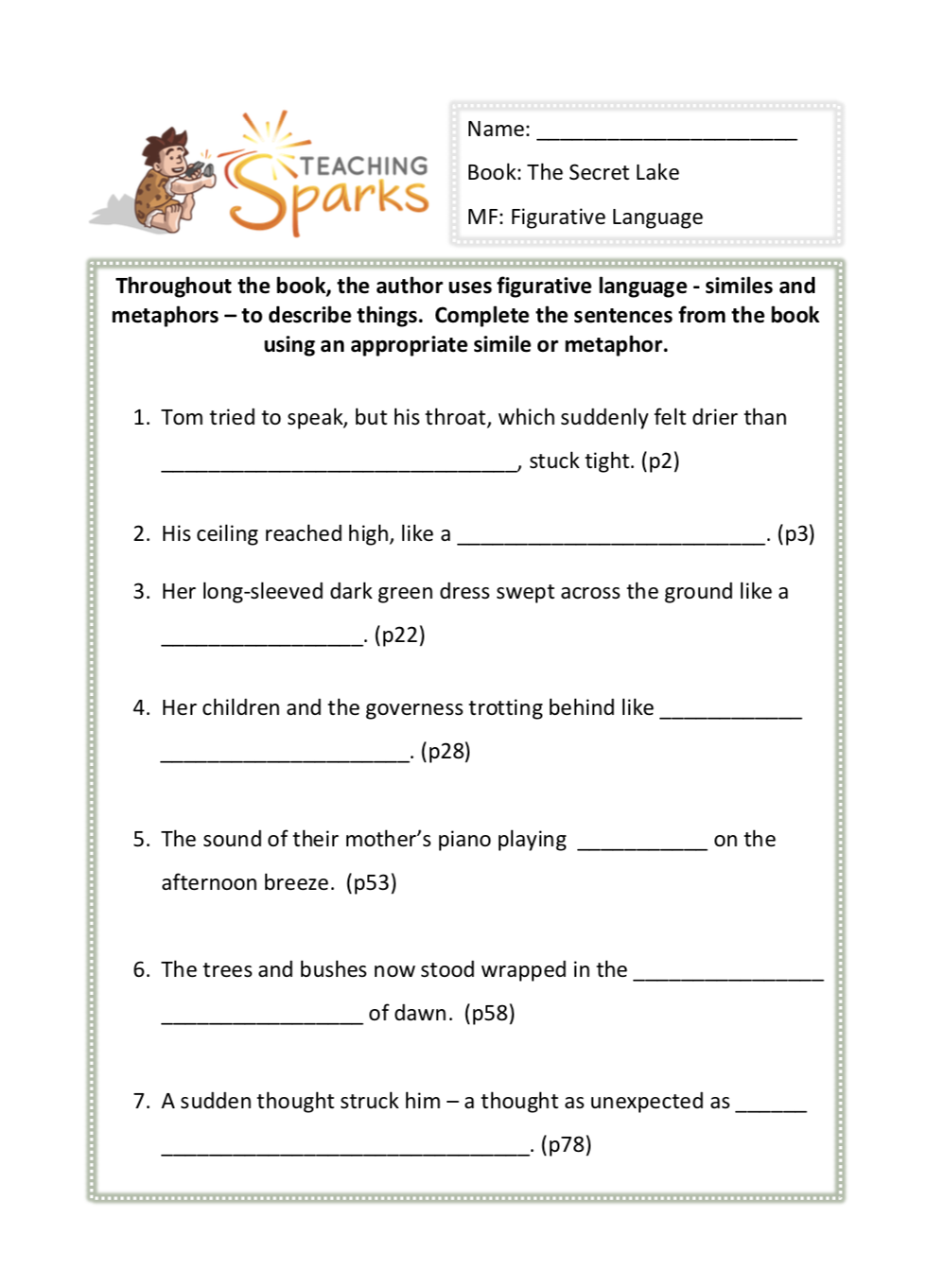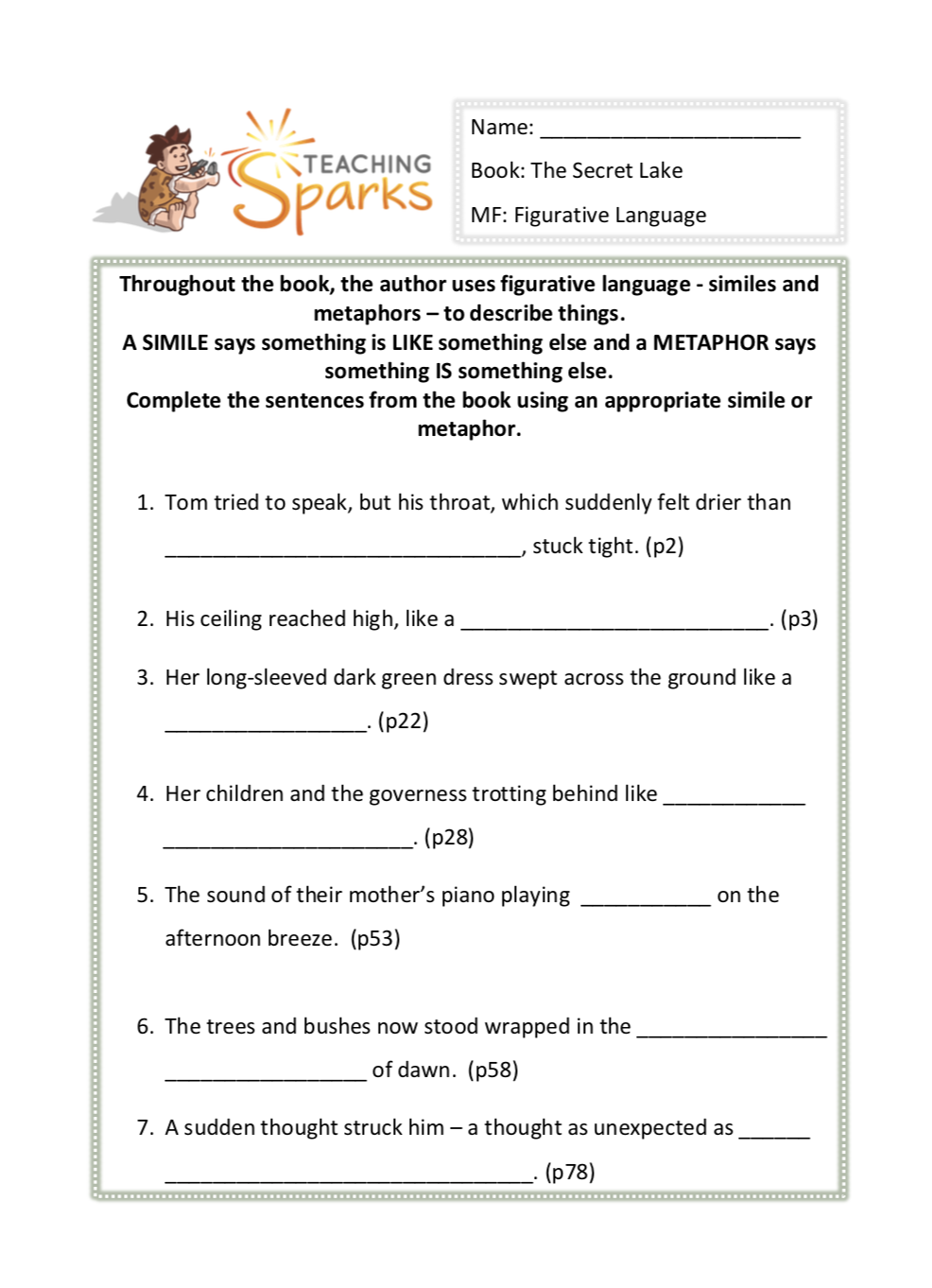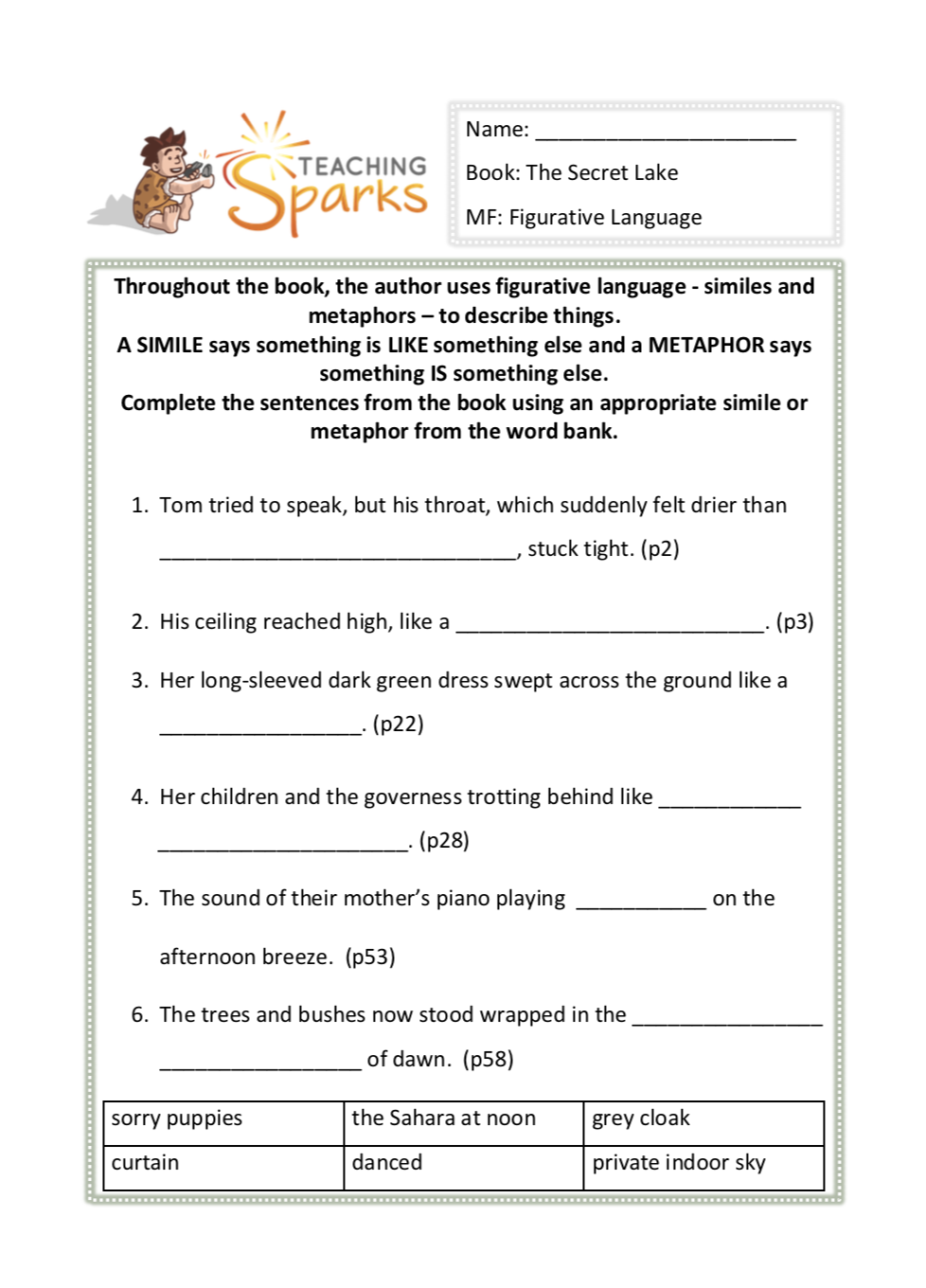The Secret Lake
The Secret Lake by Karen Inglis
When Stella and her younger brother, Tom, move to their new London home, they become mystified by the disappearances of Harry, their elderly neighbour’s dog. Where does he go? And why does he keep reappearing wet-through? Their quest to solve the riddle over the summer holidays soon leads to a boat buried under a grassy mound – and a tunnel that takes them to a secret lake. Who is the boy rowing towards them? Why is he so terrified? And whose are those children’s voices carried on the wind from beyond the woods? Stella and Tom soon discover that they have travelled back in time to their home and its gardens almost 100 years earlier. Here they make both friends and enemies and uncover startling connections between the past and present.
Main Focus: Comprehension - Chapter 1
Your Year 5 / Year 6 class will complete this comprehension after reading Chapter One of The Secret Lake.
We have organised the questions into Retrieval, vocabulary and Inference and you can choose which resource best suits your Ks2 class.
Unlock ResourceMain Focus: Vocabulary - Chapter 4
This resource focuses on the vocabulary in chapter 4 of The Secret Lake,
Your class will use the book, word bank or choices to complete the sentences. You can also instruct your class to use words of their choice.
Unlock ResourceMain Focus: Character Study
This resource for KS2 is linked to chapter 5 and character study.
Your class will answer questions and find evidence of statements about the characters.
Unlock ResourceMain Focus: Non-Fiction - Moles
Moles are a type of mammal which belong to the Talpidae family. They are found across North America, Europe and Asia and are often viewed as pests because of the damage they cause to gardens and agricultural land. They were previously hunted for their pelts, which were used to make trousers, gloves and hats.
This non-fiction resource for KS2 focuses on moles and includes a comprehension.
Unlock ResourceMain Focus: Formal and Informal Language
This resource focuses on chapter 7 in The Secret Lake and the formal and informal language used.
Your class will copy these pieces of dialogue, changing the informal language to formal language.
Unlock Resource
Main Focus: Comprehension - Chapter 10
In this resource, your class will read chapter 10 of The Secret Lake and answer the questions.
We have differentiated this resource for Year 5 and Year 6 and included a range of question types.
Unlock ResourceMain Focus: Words - Chapter 12
In this activity, your class will write the word class, a synonym and an antonym, and what they think the underlined word means in the context of the sentence.
This resource is based on chapter 12 of The Secret Lake book.
Unlock ResourceMain Focus: Inference - Chapter 15
We have created a resource entirely on inference.
Your Year 5 / Year 6 class will answer the questions using the chapter as a reference point from the book.
Unlock ResourceMain Focus: Suffixes - Chapter 17
For each of the root words, your class will add any suffixes that can be used to alter the word (E.g. happy – happiness, happily, happier, happiest).
They will then complete the sentences from Chapter 17 using words which contain a suffix.
Unlock ResourceMain Focus: Figurative Language (Whole Book)
Throughout the book, the author of The Secret Lake uses figurative language – similes and metaphors – to describe things.
A SIMILE says something is LIKE something else and a METAPHOR says something IS something else.
Your class will complete the sentences from the book using an appropriate simile or metaphor from the word bank.
Unlock Resource
